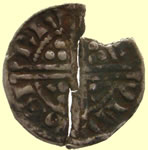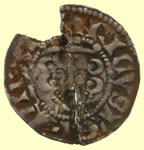

Metal detecting holidays in England with the World's most successful metal detecting club.
Twinned with Midwest Historical Research Society USA
2012 April finds page |
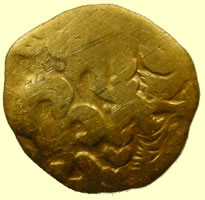 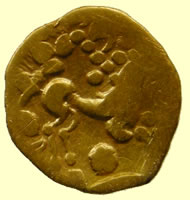 |
|||
50BC Celtic gold 1/4 stater - 50BC Celtic gold 1/4 stater - probably Snettisham type 1.57g, 14.22mm |
|||
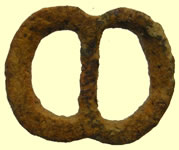 |
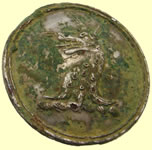 |
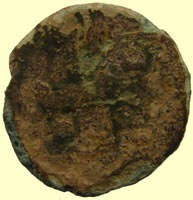 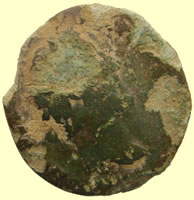 |
|
| 1550-1650 buckle | 19thC livery button | 1stC Roman sent for ID I feel comfortable identifying this piece as Antoninus Pius - 138-161 AD. However, I really can't figure out what's supposed to be happening on the reverse - perhaps an equestrian scene? Mark |
|
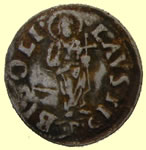 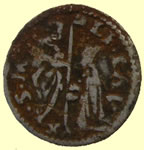 |
  |
||
Venezia, Agostino Barbarigo LXXXIV Doge (1486-1501) Soldino o Marchetto (AR) Biaggi 2938 D/ AV.BAR.S.M.V.DUX / S.Marco a s., il Doge a d. R/LAVS TIBI SOLI / il Redentore |
1853 Victoria milled silver sixpence | ||
 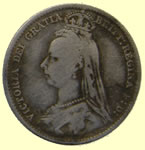 |
 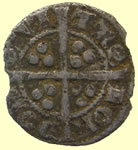 |
||
| 1890 Victoria milled silver sixpence | 1341 Edward III hammered silver florin penny - Cross 3 Obv EDWAR ANGLE DNS HYB Rev CIVI/TAS/LON/DON - London mint |
||
|
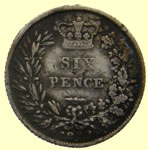 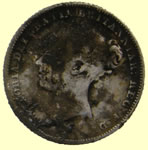 |
||
| 2nd C Roman fibular brooch | 1853 Victoria milled silver sixpence | ||
  |
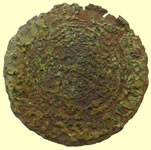 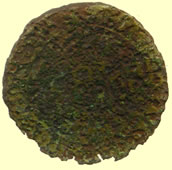 |
||
| 1816 George III milled silver sixpence | 1586 Hans Krauwincel II Rose orb Jeton HANNS KRAVWINCKEL IN NVRENB |
||
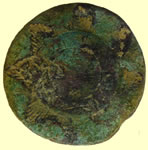 |
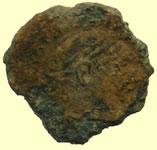 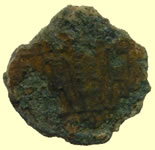 |
||
| Dragoon guards button | Mid 4thC House of Constantine Roman bronze coin - tow soldiers standing | ||
 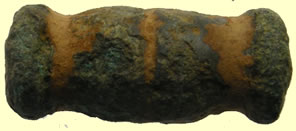 |
|||
| 1stC AD Celtic clothing toggle fastener | |||
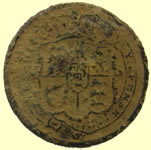 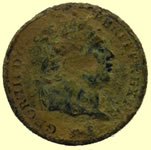 |
  |
||
| George III milled silver sixpence forgery | 1500-1700 mount | ||
 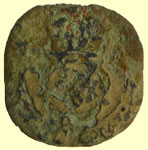 |
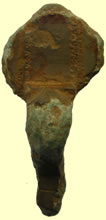 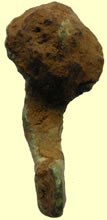  |
||
| 1634 Charles 1st hammered copper rose farthing | Not certain if this a Saxon or Roman decorated brooch - got to check ref books | ||
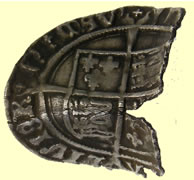 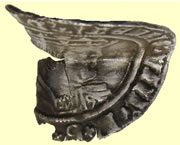 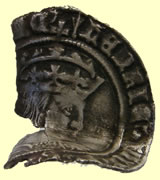 |
|||
| 1509 -26 Henry VIII hammered silver groat - Pheon mint mark | |||
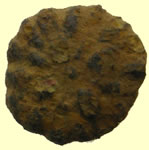 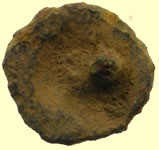 |
 |
||
| Roman baldric mount | 1stC Celtic cosmetic wode grinder | ||
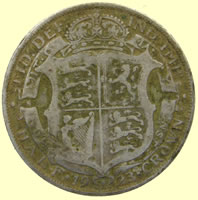 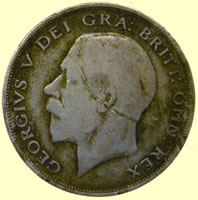 |
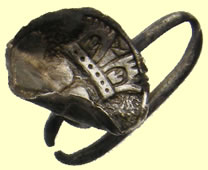 |
||
| 1923 George V milled silver half crown (30 Pence) | 17thC Charles II silver button - reported as treasure to museum | ||
 |
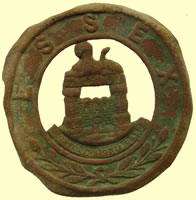 |
 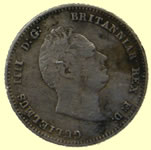 |
|
| Essex County badge | Essex regiment cap badge | 1837 William IIII milled silver sixpence | |
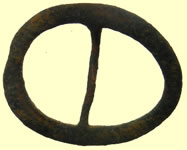 |
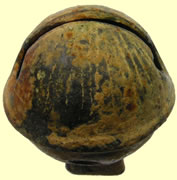 |
  |
|
| 1550-1650 buckle | 18thC crotal bell | 1941 George VI milled silver sixpence | |
 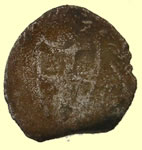 |
 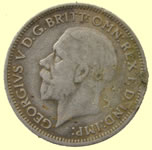 |
||
| 1649 Commonwealth hammered silver penny | 1933 George V milled silver sixpence | ||
  |
 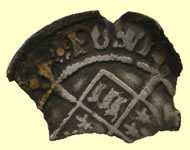 |
||
1247 Henry III voided long cross penny Obv HENRICVS REX Rev **VND/ION ** - Bury St Edmunds mint |
1495 -8 Henry VIII hammered silver groat | ||
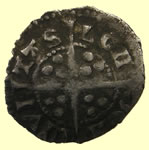 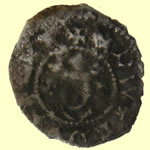 |
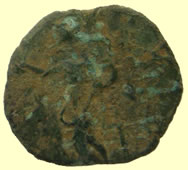  |
||
1300-1310 Edward 1st hammered silver farthing - type 28 d Obv EDWARDVS REX A Rev CIVI/TAS/LON/DON - London mint |
4thC Roman Radiate coin sent for ID This one, even with no legend visibly apparent at all, I actually feel confident to tell you is an official issue (Mint at Vienne?) Tetricus I / PAX AVG billon antoninianus (270-273 AD). Compare this one to: http://www.stoa.org/gallery/album110/ML_06_Tetricus_I_Pax_ant2 Mark |
||
 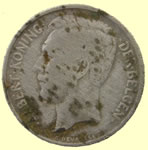 |
 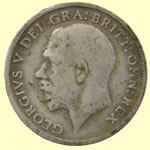 |
||
| 1910 Belgium milled silver 50 cents | 1921 George V milled silver sixpence | ||
 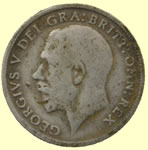 |
 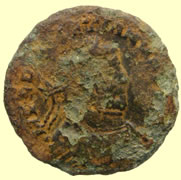 |
||
| 1920 George V milled silver sixpence | 4thC Roman bronze sent for ID 7.67g, 25.48mm What you have there is either a pre-reform billon (originally silvered) antoninianus or a post-reform "radiate" fraction of a follis - of a very similar design (for the sake of familiarity, and at the same general value, it's assumed) to the old antoniniani, but with no pretense of containing silver. Diocletian ruled from 286-305. Most of his monetary reforms were accomplished in the early 290's, so if it's an antoninianus (and if it is, it will have "21" in some notation - generally in the exergue and in Roman Numerals - like "XXI") it dates to 294 or prior. The post-reform radiate follis fractions date to 294 and later. Mark |
||
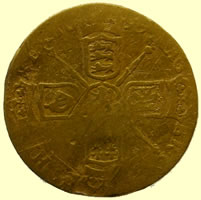 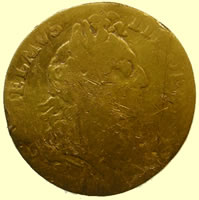 |
|||
| 1695 William III gold half guinea - rarer than hens teeth | |||
 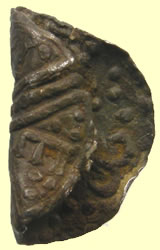 |
|||
Saxon hammered silver penny - sent to Fitzwilliam museum for recording and provisional ID Our goldsmith needs to work his magic on this very rare coin - very crisp detail on this coin 1.22g, 18.30mm This is a very interesting find, providing a new type for the Heavy Coinage of Offa. It is a coin of the London moneyer Eama, with some similarities to Chick type 207 (Blunt 90; a unique coin from the Delgany hoard), but the triple-stranded cross is new. The first three letters of the moneyer's name (EAM) are clearly visible in the images, and you might be able to see whether the final A is visible on the coin itself. Presumably the obverse, which almost entirely obscured by the bending of the coin, has M / OFFA / REX in three lines, of which the M is visible in the images. I have recorded this as EMC 2012.0121.
Martin |
|||
  |
  |
||
| Stunning gilded 2ndC Roman fibular brooch | 1603 James 1st hammered silver sixpence | ||
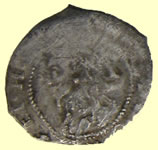 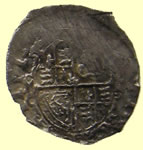 |
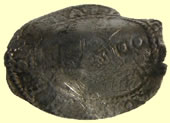  |
||
| 1634 Charles 1st hammered silver penny | 1560-1 Elizabeth 1st hammered silver half groat | ||
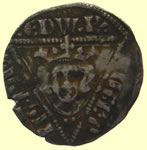 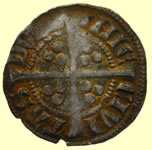 |
 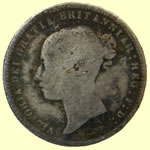 |
||
Irish 1276 Edward 1st hammered silver penny Obv EDWR ANGL DNS HYB Rev CIVI/TAS/DUB/LINIE - Dublin mint |
1873 Victoria milled silver sixpence | ||
 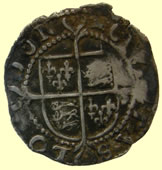 |
 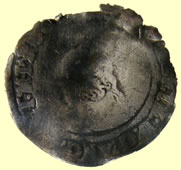 |
||
| 1594- 6 Elizabeth 1st hammered silver half groat | 1567 Elizabeth 1st hammered silver three pence | ||
  |
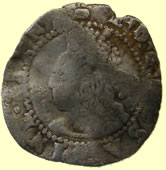 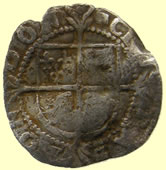 |
||
1341 Edward III hammered silver florin penny Obv EDWAR ANGLE DNS HYB Rev CIVI/TAS/LON/DON - London mint |
1592-5 Elizabeth 1st hammered silver half groat | ||
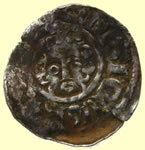 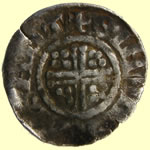 |
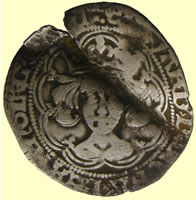 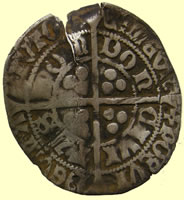 |
||
1215 Henry III hammered silver short cross penny Obv HENRICVS REX Rev + EIMER ON CANT - Moneyer Eimer of Canterbury mint |
1471 Edward IV hammered silver groat - Pierced cross initial mark Obv EDWARD DI GRA REX ANGL Z FRANC Rev CIVI/TAS/LON/DON - London mint |
||
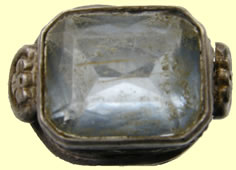  |
|||
| Victorian silver ring | |||
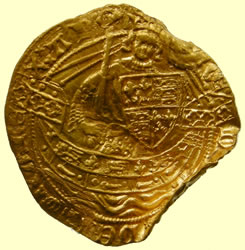 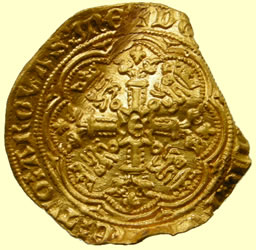 |
|||
1356-61 Edward III hammered gold half noble - Cross 3 - Open E in centre of reverse cross Obv EDWARD DEI GRA REX ANGL 24.79mm, 3.89g |
|||
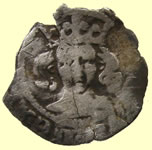 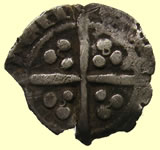 |
 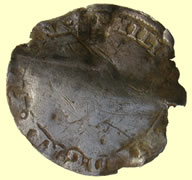 |
||
1351 Edward III hammered silver penny - Pre treaty Annulets in 4 quadrants on rev Rev CIVI/TAS/LON/DON - London mint |
1554 Philip & Mary hammered silver half groat | ||
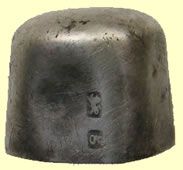 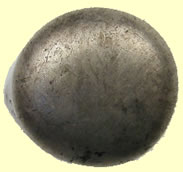 |
  |
||
| Victorian silver cane tip | 16thC Tudor toggle button | ||
|
|||
|
|||
Another staggering find - Huge Saxon/Viking medallion 11.20g, 27.95mm |
|||
Stunning Primary Saxon silver sceat - 600-775 AD sent to Fitzswilliam museum for recording and ID 12.22mm,1.21g Many thanks. I have recorded this as EMC 2012.0124. It is Series E Plumed Bird variety J (an early variety in the primary phase of Series E, c. 700). Best wishes, Martin |
|||
  |
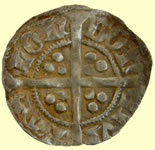 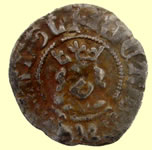 |
||
Saxon Stirrup terminal |
1377 Richard II hammered silver half penny - Type C (ii) Obv + RICHARD REX ANGL Rev CIVI/TAS/LON/DON - London mint |
||
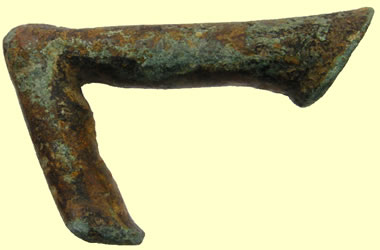 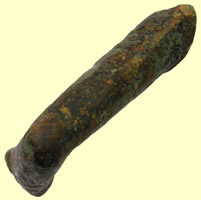 |
|||
| Unusual medieval pot leg | |||
 |
 |
 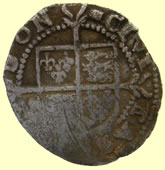 |
|
RN Master - 1807-1825
|
Honourable East India Company |
1594-6 Elizabeth 1st hammered silver half groat | |
  |
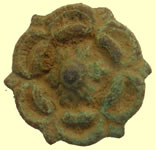 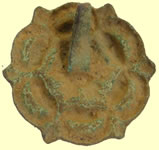 |
||
1215 Henry III hammered silver short cross half penny Obv HENRICVS REX Rev *.ON.CA** - Canterbury mint |
17thC mount | ||
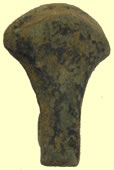 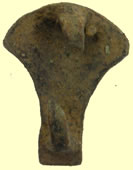 |
 |
||
| 1500-1700 mount | Georgian watch winders | ||
 |
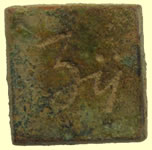 |
 |
|
| Victorian jewelry item | 18thC apothecary weight | Very unusual 1500 -1650 buckle with side tang | |
 |
 |
  |
|
| 16thC Tudor fretwork buckle | 18thC silver button | Taco'd 1180 Henry II hammered silver short cross coin - Class 1b Obv HENRICVS REX Rev +ALWARD.ON.LVND - Alward of London mint |
|
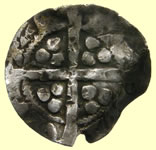  |
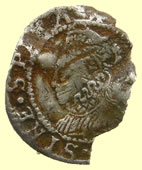 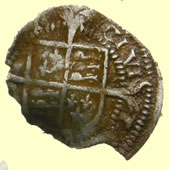 |
||
1341 Edward III hammered silver florin penny Obv EDWAR ANGLE DNS HYB Rev CIVI/TAS/LON/DON - London mint |
16thC Elizabeth 1st hammered silver half groat | ||
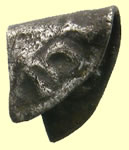 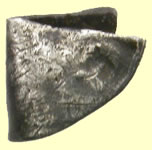 |
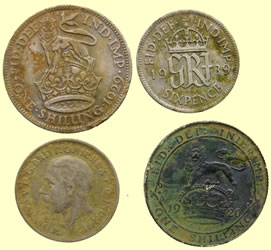 |
||
| Taco'd medieval hammered silver half penny | Lots of George V and VI silver coins turning up | ||
 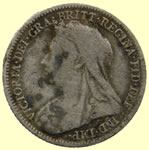 |
 |
||
| 1900 Victoria milled silver sixpence | 19thC toy anchor | ||
 |
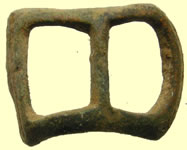 |
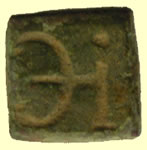 |
|
| 2 - 15thC casket keys | 1500-1700 buckle | 18thC apothecary weight | |
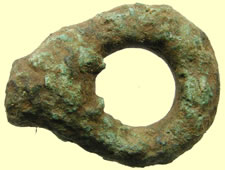 |
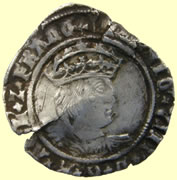  |
||
| Roman Lorica tie loop | 1526-44 Henry VIII hammered silver groat - arrow mint mark | ||
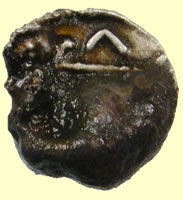 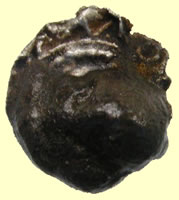 |
|||
| Celtic silver coin with a hard lump stuck to it - this will take a lot of 'cooking' to clean | |||
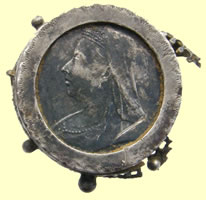 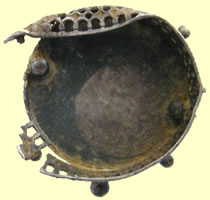 |
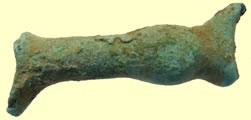 |
||
| Neat Victorian silver brooch | c10thC Saxon harness cheek piece | ||
 |
|
||
| 18thC clog fasteners | Victorian silver brooch | ||
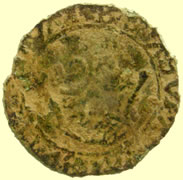  |
 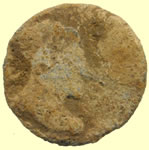 |
||
Crown introduced in 1340 by Philip VI (1328-50) Royal Crown with 3 rosettes across body of crown Rev Triple banded straight cross fleuretty AV |
17thC lead token | ||
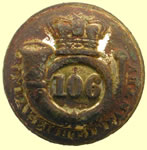 |
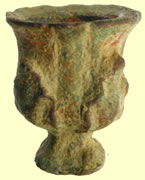 |
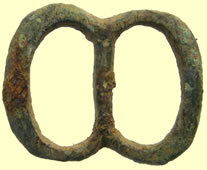 |
|
106th Regiment button The 106th Regiment of Foot (Bombay Light Infantry) was an infantry regiment of the British Army from 1862 to 1881, when it was amalgamated into The Durham Light Infantry, which was itself later amalgamated into the Rifles. |
Georgian candle holder | 1550-1650 buckle | |
 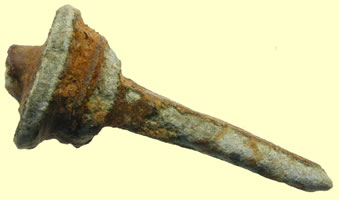 |
|||
| Roman bronze cotter pin | |||
  |
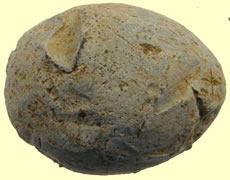 |
||
| Medieval knife chape | Roman lead ballista shot | ||
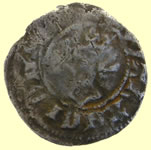 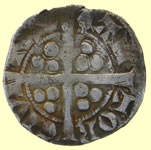 |
 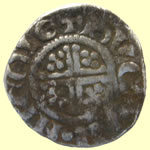 |
||
1341 Edward III hammered silver florin penny Obv EDWAR ANGLE DNS HYB Rev CIVI/TAS/CAN/TOR - Canterbury mint 1.29g, 17.67mm |
1180 Henry II hammered silver short cross penny - Class 1b Obv HENRICVS REX Rev +hVGO.ON. NICOLE - Moneyer Hvgo of Lincoln mint 1.38g, 17.91mm |
||
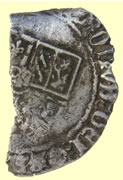 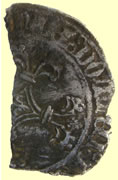 |
 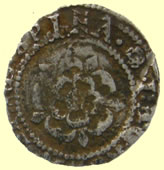 |
||
| 1475 Dutch -Karel de Stoute -silver DOUBLE STUIVER | 1605-6 James 1st hammered silver penny 0.39g,13.73mm |
||
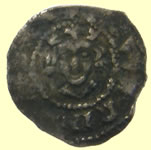 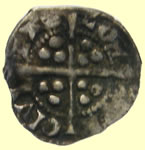 |
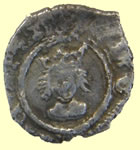 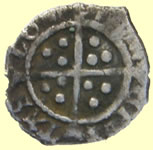 |
||
1335-1343 Edward III hammered silver farthing Obv EDWARDVS REX ** Rev CIVI/TAS/LON/DON - London mint 11.17mm,0.36g |
1485 Henry VIII hammered silver farthing - 'brush hair' - wide cleft cross Open crown type Obv hENRIC DI GRA REX Rev CIVI/TAS/LON/DON - London mint 0.47g,10.66mm |
||
 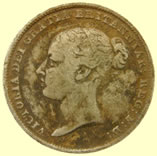 |
 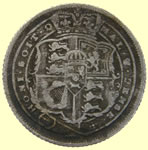 |
||
| 1846 Victoria milled silver sixpence | 1816 George III milled silver sixpence | ||
 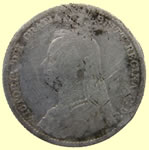 |
 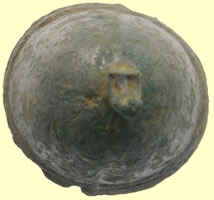 |
||
| 1891 Victoria milled silver sixpence | 17thC bell | ||
 |
 |
  |
|
| 17thC buckle | 1550-1650 buckle | 1500-1700 mount | |
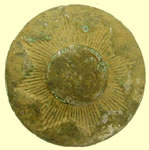 |
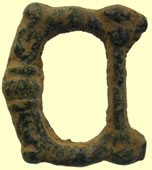 |
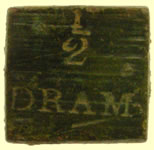 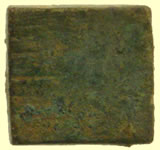 |
|
| 19thC 33rd Regiment of foot officers button | 1550-1700 buckle | 18thC apothecary weight | |
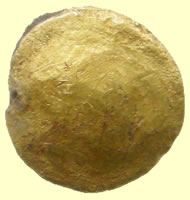 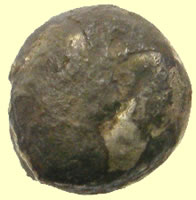 |
|||
Saxon Gold ingot - sent to Fitzwilliam museum for recording 1.63g, 9.93mm |
|||
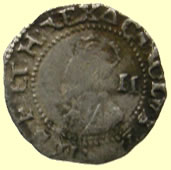 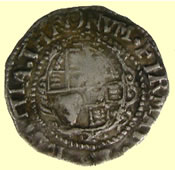 |
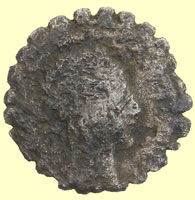 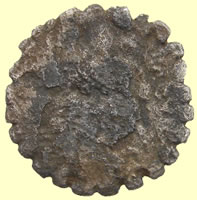 |
||
| 1639-40 Charles 1st hammered silver half groat - Triangle mint mark | BC Roman silver coin - serrated type - sent for provisional ID (Mike) 'cooking' it to remove crust I'll need to see what results you have cleaning this one. It's not immediately obvious which moneyer, and therefore what year, this may be from. I think it might be L. Roscius Fabatus, c. 64 BC. That's one of the very last types of serrate denarius and is fairly common, having been part of a very large issue. I don't find too many other seratti with seemingly 2 "parallel" major figures on the reverse. Details of the obverse, if this is the actual type, should reveal Juno Sospita in goat-skin headdress. I'm less certain about the obverse type here. Too many questions at the moment to make any pronouncements - I hope some cooking will make details a little clearer, although I suspect that corrosion will have eliminated many details. Mark |
||
|
|||
| Superb Zoomorphic Saxon Stirrup terminal - hog design | |||
|
 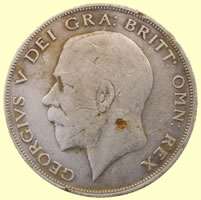 |
||
| Celtic wode grinder pestal | 1921 George V milled silver half crown (30 pence) | ||
  |
 |
||
| 1787 George III milled silver shilling | 19thC S buckle | ||
 |
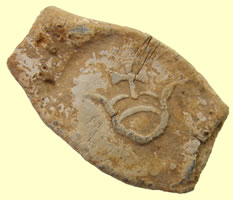 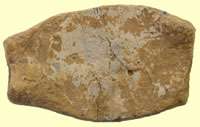 |
||
| 18thC exploded toy cannon | Medieval lead bale seal | ||
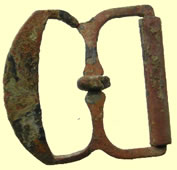 |
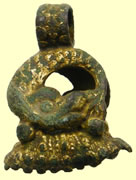 |
  |
|
| 19thC buckle | Georgian fob seal holder | 1819 George III milled silver sixpence | |
 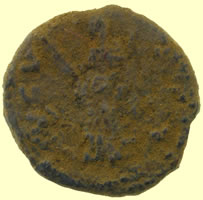 |
|||
| Roman silver coin - straight into cooker (Dennis) | |||
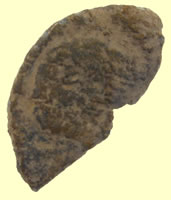 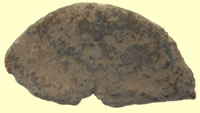 |
 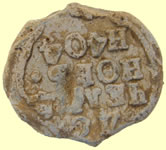 |
||
| Roman silver coin - straight into cooker (Dennis) | 1780 Russian lead bale seal | ||
 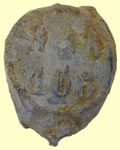 |
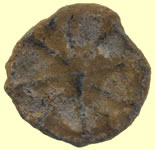 |
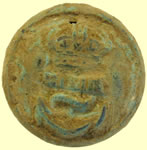 |
|
| 18thC Dutch lead bale seal | 15thC lead token | 20th Navy button | |
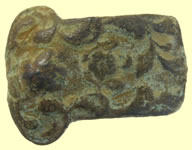 |
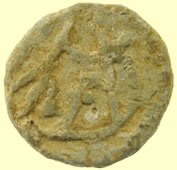  |
||
| 18thC clog fastener | Roman lead token | ||
 |
  |
||
| 16thC Tudor S buckle | 1247 Henry III hammered silver voided long cross half penny - Class 2b Obv HENRICVS REX TERCI Rev /ASO/NNO - Moneyer Lvcas of Northampton |
||
 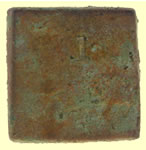 |
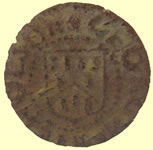 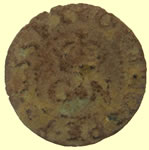 |
||
| 18thC apothecary weight | 17thC George Nicholson, grocers of Thorp Le Soken Essex hammered copper trade farthing | ||
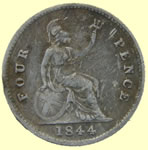 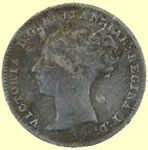 |
|
||
| 1844 Victoria milled silver four pence | 17thC strap end | ||
|
|||
600-775 AD Saxon sceat - sent to Fitzwilliam museum for ID (Mitch) 1.16g, 12.12mm Needs a good cook to remove crust Sceat 5 (EMC Martin |
|||
  |
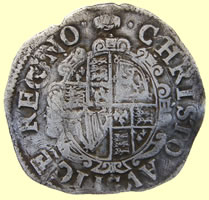  |
||
1215 Henry III hammered silver short cross penny -Class 8a Obv HENRICVS REX Rev FILAIMER ON LVNDE - Fil Aimer of London Mint |
1636-8 Charles 1st hammered silver shilling (12 pence) | ||
 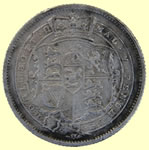 |
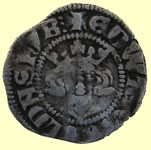 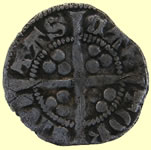 |
||
| 1820 George III milled silver sixpence | 1344 Edward III hammered silver florin penny Obv EDWAR ANGLE DNS HYB Rev CIVI/TAS/CAN/TOR - Canterbury mint |
||
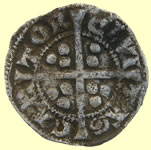 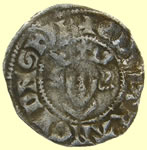 |
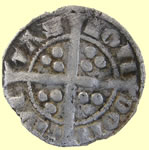 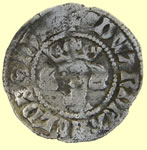 |
||
1344 Edward III hammered silver florin penny Obv EDWAR ANGLE DNS HYB Rev CIVI/TAS/CAN/TOR - Canterbury mint |
1279 Edward 1st hammered silver penny - Class 10ab Obv EDWARD R ANGLE DNS HYB Rev CIVI/TAS/LON/DON - London mint |
||
  |
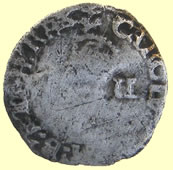 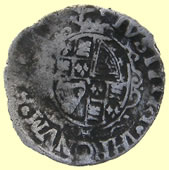 |
||
1247 Henry III hammered silver voided long cross half penny Obv HENRICVS REX Lincoln mint |
1634 Charles 1st hammered silver half groat | ||
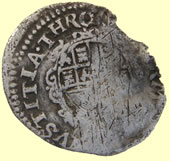 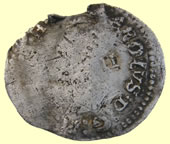 |
 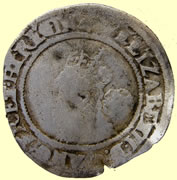 |
||
| 1634 Charles 1st hammered silver half groat | 1569 Elizabeth 1st hammered silver sixpence | ||
  |
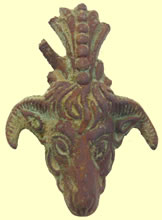 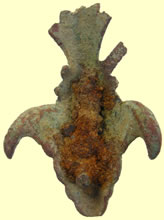 |
||
| 1696 William III milled silver sixpence | Huge Georgian rams head mount | ||
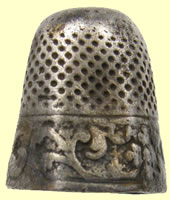 |
 |
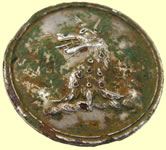 |
|
| Georgian decorated silver thimble | 19thC livery button | 19thC livery button | |
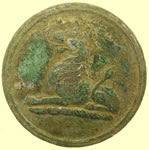 |
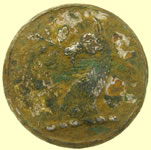 |
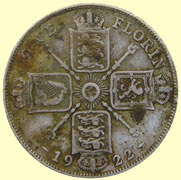 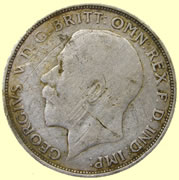 |
|
| 19thC livery button | 19thC livery button | 1922 George V milled silver florin (24 pence) | |
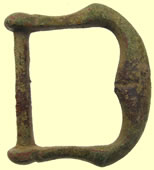 |
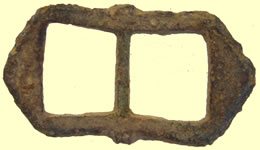 |
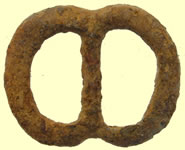 |
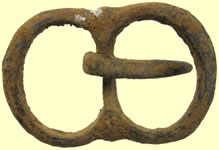 |
| Georgian harness buckle | 1500-1650 buckle | 1500-1650 buckle | 1500-1650 buckle |
 |
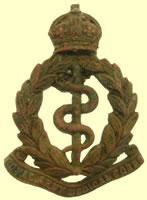 |
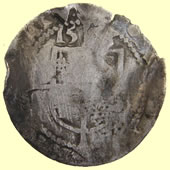  |
|
| 1920's style gold charm | Royal Army medical corp badge | 1565 Elizabeth 1st hammered silver 3 pence | |
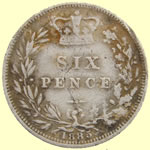 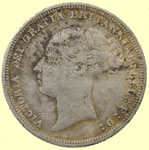 |
 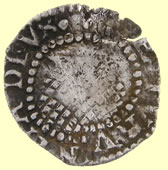 |
||
| 1885 Victoria milled silver sixpence | 1630 James 1st hammered silver half groat | ||
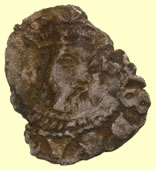 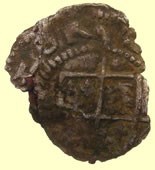 |
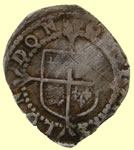 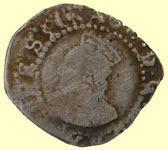 |
||
| 1544-7 Henry VIII hammered silver half groat | 1587-9 Elizabeth hammered silver penny | ||
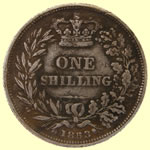  |
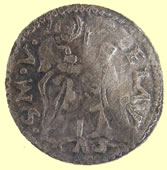 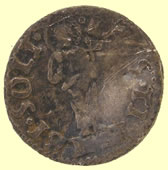 |
||
| 1853 Victoria milled silver sixpence | 1501-1521). Rev: LAVS TIBI SOLI (Thee Alone be Praised). Haloed figure of Christ holding a cross. Obv: LE LAV DVX S M V (Leonardo Lauredan, Doge. St Mark of Venice.) Doge kneeling before Saint Mark |
||
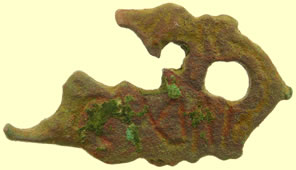  |
|||
Late Early Medieval (Anglo-Scandinavian) cast copper alloy fragment of a cheek piece from a harness fitting. Note this example has unusual runic writing on the face |
|||
 |
 |
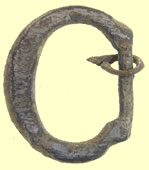 |
|
| 19thC livery button | 17thC sword hanger fitting | Medieval buckle | |
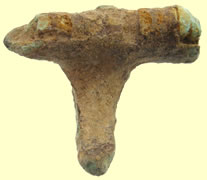 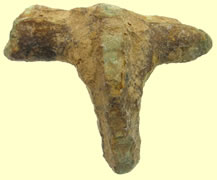 |
  |
||
| 2nd C Roman fibular brooch | 16thC Elizabeth 1st hammered silver sixpence | ||
|
|||
1stC Roman silver coin sent off for ID (John L) 'cooking it' This is definitely a denarius of Domitian (81-96 AD). I should be able to tell you a lot more about it, including being able to date it rather closely, once you have cooked it a bit. It seems to have a "laundry-list of titlature" as the reverse legend, so it should be very closely dateable - but it's a little "occluded" at the moment and I'm not 100% sure what I'm seeing. The reverse type is Minerva with spear - Minerva was a particularly favorite deity of Domitian's and appears on lots of his coins. I'll tentatively date it to 90/91 AD, but that might change when we can see more detail. Mark |
|||
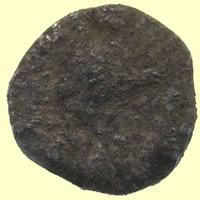 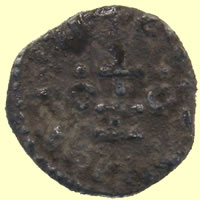 |
|||
600-775 AD Saxon sceat - sent to Fitzwilliam museum for ID - sent to Fitzwilliam museum for ID (John) 1.16g,12.34mm Needs a good cook to remove crust Sceat 4 (EMC 2012.0130) is Series F, variety a (ii) Martin |
|||
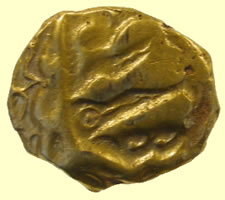 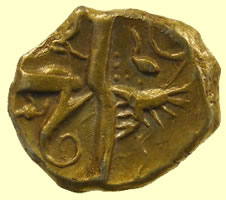 |
|||
Stunning Celtic gold 1/4 stater- Unique animal design 1.45g,11.83mm A gold Iron Age quarter stater, Early Uninscribed British series O 'Geometric' type, c.100-50 BC. Obverse close to Hobbs no. 416; VA1225 |
|||
A Continental Iron Age Gallo-Belgic DC uninscribed gold quarter stater, Gallo-Belgic DC , dating circa 70-50 BC. VA 69-1. 1.60g, 9.23mm |
|||
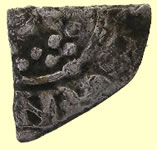 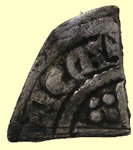 |
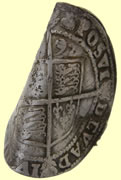 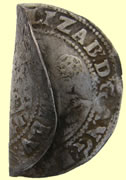 |
||||||||||
1215 Henry III hammered silver farthing Northampton mint |
1592 Elizabeth 1st hammered silver sixpence | ||||||||||
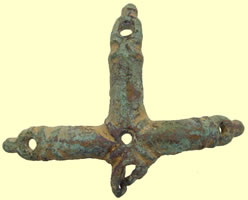  |
|||||||||||
| Medieval harness pendant hanger | |||||||||||
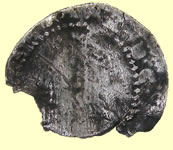 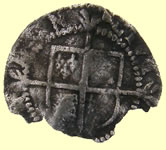 |
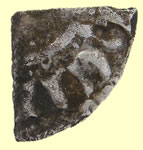  |
||||||||||
| 1560-1 Elizabeth 1st hammered silver penny | 1247 Henry III hammered silver voided farthing Rev / RIC/ - Moneyer Richard of Canterbury mint |
||||||||||
|
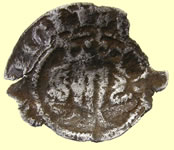  |
||||||||||
| Roman bronze knife pommel | 1351-61 Edward III hammered silver penny - Pre Treaty London - extra annulets in all 4 quadrants on rev Obv EDWARDVS REX ANGLI Rev CIVI/TAS/LOND/DON - London mint |
||||||||||
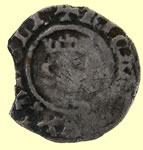 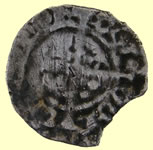 |
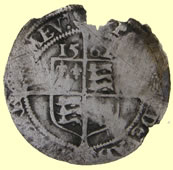 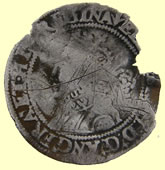 |
||||||||||
1377-99 Richard II hammered silver half penny - Type 2 Obv +RICHARD x REX ANGLI Rev CIVI/TAS/LOND/DON - London mint |
1562 Elizabeth 1st hammered silver three pence | ||||||||||
 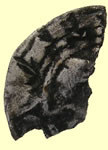 |
 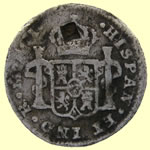 |
||||||||||
1344 Edward hammered silver cut halfpenny - Florin type Obv ***DWAR R Rev CIVI/TAS/LOND/DON - London mint |
1800 Spanish reale milled silver coin | ||||||||||
 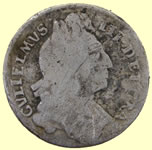 |
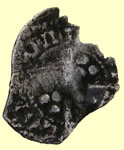 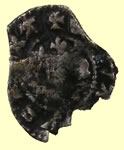 |
||||||||||
| 1696 William III milled silver sixpence | 1279 Edward 1st hammered silver farthing - Type 28 inner circle both sides Obv + E*WA*VS REX A Rev CIVI/TAS/LOND/DON - London mint |
||||||||||
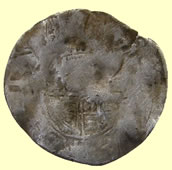  |
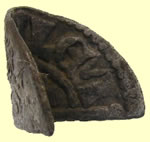 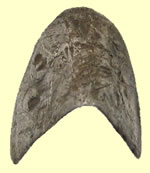 |
||||||||||
| 1634 Charles 1st hammered silver half groat | 1247 Henry III hammered silver voided long cross half penny Obv HENRICVS REX Rev WILLEM - Moneyer Willem of Canterbury mint |
||||||||||
 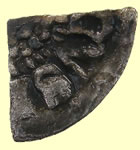 |
 |
||||||||||
1247 Henry III hammered silver voided long cross qtr penny Obv HENRICVS REX Moneyer Nicole of Canterbury mint |
15thC casket key | ||||||||||
3rd C Roman silver coin - straight into cooker (John) - sent for provisional ID 19.72mm, 2.74g There's not quite enough detail in the right places (close, though) to tell you with certainty any more than you already know - it's a billon antoninianus, and as such either has to date to the later 3rd century if official, or the mid-3rd century if a contemporary copy. If that obverse legend turns out to read as it appears it might at this point, it would be a Gallic Empire piece from Victorinus - but on the basis of this photo, that's half guesswork at best. Send me another photo when the obverse legend begins to become more defined and I'll tell you a lot more about it. Mark |
|||||||||||
 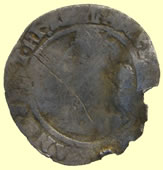 |
 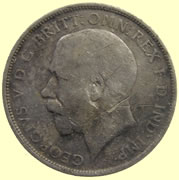 |
||||||||||
| 1565 Elizabeth hammered silver half groat | 1919 George V milled silver florin (24 pence) | ||||||||||
  |
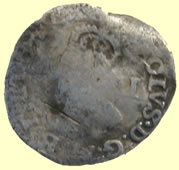 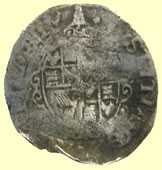 |
||||||||||
| 1487-8 Henry VII hammered silver groat | 1634-5 Charles 1st hammered silver half groat | ||||||||||
  |
  |
||||||||||
1344 Edward III hammered silver florin penny Obv EDWR ANGL DNS HYB Rev CIVI/TAS/LON/DON - London mint |
Early decorated silver hooked mount - report to museum as possible treasure | ||||||||||
 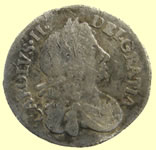 |
|||||||||||
| Nice early 1677 Charles II milled silver 2 pence | |||||||||||
 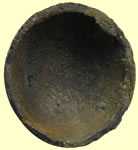 |
 |
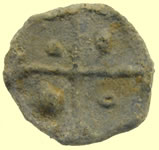 |
|||||||||
| 17thC button | 15th lead token | 15th lead token | |||||||||
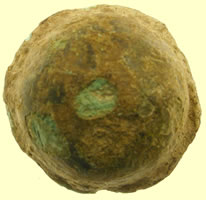 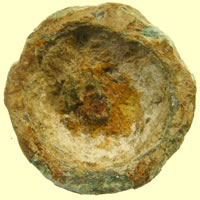 |
 |
 |
|||||||||
| Roman bronze mount | Royal Engineers button | 19thC livery button | |||||||||
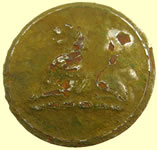 |
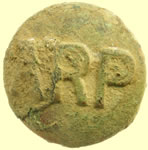 |
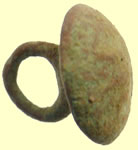 |
 |
||||||||
| 19thC livery button | WWII Air raid police button | 16thC Tudor button | 1830 London guildhall trade weight | ||||||||
70 BC Morini 'boat tree' Celtic qtr stater |
|||||||||||
  |
  |
||||||||||
| 1891 Victoria milled silver sixpence | Saxon pendant | ||||||||||
 |
 |
||||||||||
| 1550-1650 buckle | 18thC exploded toy cannon | ||||||||||
 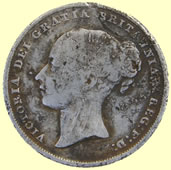 |
 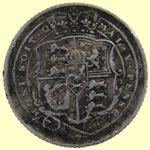 |
||||||||||
| 1856 Victoria milled silver shilling (12 pence) | 1818 George III milled silver sixpence | ||||||||||
 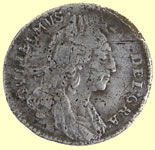 |
  |
||||||||||
| 1696 William III milled silver sixpence | 1613 James 1st hammered silver half groat - Trefoil mint mark | ||||||||||
 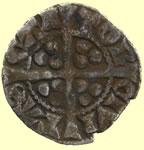 |
  |
||||||||||
1344 Edward III hammered silver florin penny Obv EDWAR R ANGL DNS HYB Rev CIVI/TAS/CAN/TOR Canterbury mint |
1860 Victorian milled silver 3 pence | ||||||||||
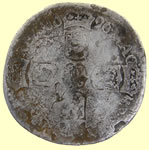  |
  |
||||||||||
| 1696 William III milled silver sixpence | 1247 Henry III hammered silver voided long cross penny - Class 5c Obv HENRICVS REX Rev WIL ** ONl/VND - Moneyer Willem of London mint |
||||||||||
 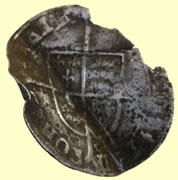 |
 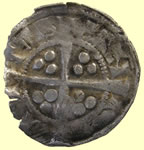 |
||||||||||
| 1554 Mary hammered silver groat | 1344 Edward III hammered silver florin penny - Cross 1 Obv EDWR ANGL DNS HYB Rev CIVI/TAS/CAN/TOR Canterbury mint |
||||||||||
 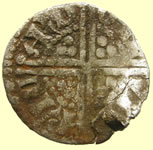 |
 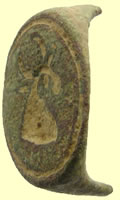 |
||||||||||
1247 Henry III hammered silver voided long cross penny - Class 5 Obv HENRICVS REX III Rev RIC/HARD/ONC/ANT- Moneyer Richard of Canterbury mint |
17thC seal ring | ||||||||||
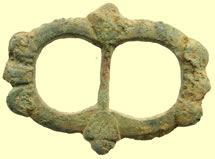 |
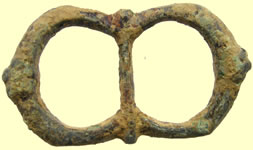 |
||||||||||
| 1550 -1650 buckle | 1550 -1650 buckle | ||||||||||
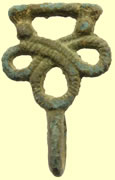  |
  |
||||||||||
| 16thC Tudor clothing fastener | 1stC Roman Rosette brooch | ||||||||||
 |
 |
 |
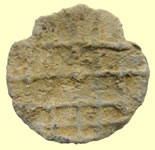 |
||||||||
| Medieval buckle | 17thC sword hanger | 1550 -1650 buckle | 17thC lead token | ||||||||
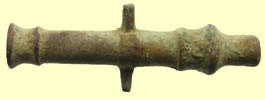 |
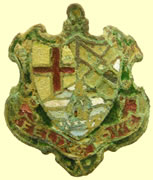 |
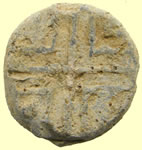 |
|||||||||
| 18thC toy cannon | Felixstow badge | 15thC lead token | |||||||||
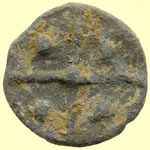 |
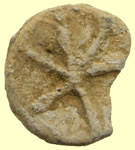 |
  |
|||||||||
| 15thC lead token | 15thC lead token | Medieval mount | |||||||||
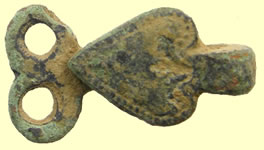  |
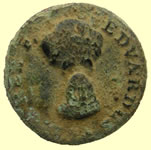 |
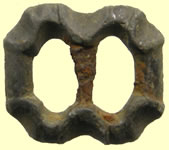 |
|||||||||
| Georgian spur fitting | Edvardus Rex F - button | 1550-1700 buckle | |||||||||
  |
  |
||||||||||
1247 Henry III hammered silver voided long cross half penny - Class 5 Obv HENRICVS REX III Rev **ONL/VND/** - London mint |
1279 Edward 1st hammered silver farthing - Type 28 inner circle both sides Obv + EDWA*VS REX A Rev CIVI/TAS/LON/DON - London mint |
||||||||||
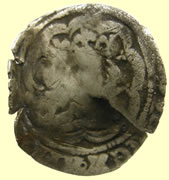 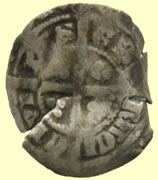 |
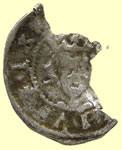  |
||||||||||
1340 Edward III hammered silver half groat Obv *** REX ANGL ** Rev CIVI/TAS/EBO/RACI - York mint |
1279 Edward 1st hammered silver halfpenny - Type 13 Obv ***VS REX A Rev CIVI/TAS/LON/DON - London mint |
||||||||||
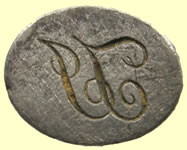 |
 |
  |
|||||||||
| Georgian silver fob seal matrix | 18thC silver button | 16thC Elizabeth hammered silver half groat | |||||||||
 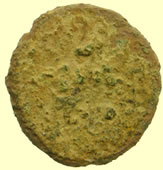 |
  |
||||||||||
| Mid 4thC Barbarous radiate Roman bronze coin | 1590-2 Elizabeth hammered silver half groat - hand mint mark | ||||||||||
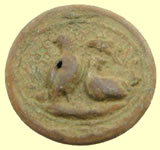 |
  |
||||||||||
| 19thC hunting button | 1837 William Iv milled silver groat ( 4 pence) | ||||||||||
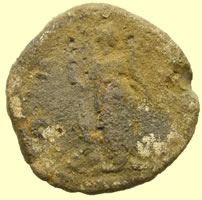 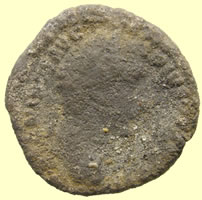 |
|||||||||||
| Roman silver coin - in the 'cooker' to remove crust (Terry) | |||||||||||
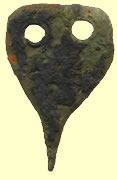 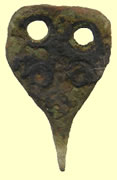 |
|||||||||||
| 8th century AD. Hooked tags were used to fasten a variety of openings on Anglo-Saxon costume, including leg-bindings, purses and cuffs. - circule decoration | |||||||||||
|
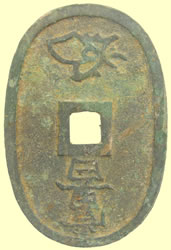  |
||||||||||
| Victorian silver cane band | Huge Japanese coin | ||||||||||
 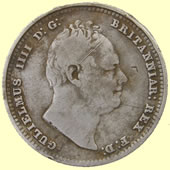 |
 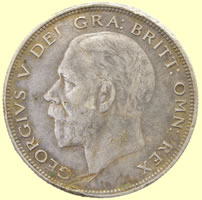 |
||||||||||
| 1834 William IV milled silver shilling (12 pence) | 1931 George V milled silver half crown (30 pence) | ||||||||||
Georgian spur and ends |
|||||||||||
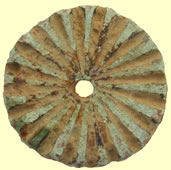 |
 |
 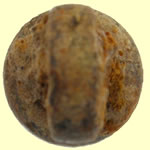 |
|||||||||
| Georgian pastry jigger | Georgian watch winders | Georgian bell weight | |||||||||
  |
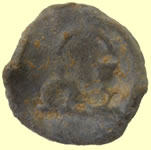 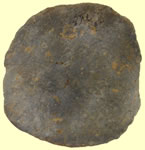 |
||||||||||
| 1697 William III milled silver shilling | 16thC Elizabethan illegal pub token | ||||||||||
 |
 |
||||||||||
| 18thC toy cannon | Georgian domino | ||||||||||
|
|||||||||||
| C8thC Saxon bronze bracelet - circule design | |||||||||||
  |
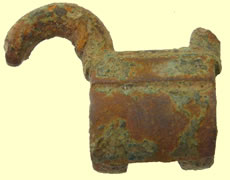 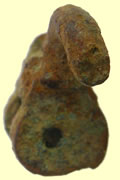 |
||||||||||
| Georgian barrel tap - decorated head | Medieval barrel lock | ||||||||||
    |
|||||||||||
Incredibly rare 6thC Saxon cruciform brooch - virtually non existent on the continent
|
|||||||||||
 |
 |
 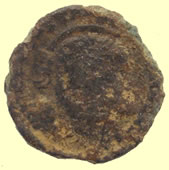 |
|||||||||
| 15thC casket key | 17thC sword hanger | 4thC Roman bronze coin sent off for ID Although I can't tell you who's on the obverse - these were struck for Constantine I, Licinius I, Crispus & Licinius II at the very least and perhaps a couple other folks whom I'm not remembering - this is what's referred to as a "VLPP" - an abbreviation of the long reverse legend - "VICTORIAE LAETAE PRINC PERP" and has 2 Victories facing each other resting a shield inscribed VOT/PR on a short cippus (column, or plinth) or altar. This is a helmeted-bust Constantine I from Ticinum, known official - http://www.stoa.org/gallery/album164/02_Constantine_I_VLLP_TIC This is one of the cruder contemporary copies - it's obvious that there was no attempt being made to fool anyone - this was a de-facto "official" coin in its place of origin, not a "counterfeit" of any sort, made to deceive. If you can clean this up a bit, I should be able to tell if A- it's official, and B- who's on the obverse. Mark |
|||||||||
 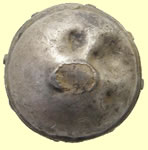 |
  |
||||||||||
| Georgian silver and glass button | 1634 Charles 1st hammered copper rose farthing | ||||||||||
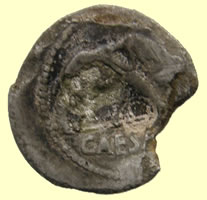 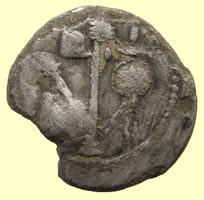 |
|||||||||||
49 BC 'cooked' Roman silver sent for ID Issued by JC himself, the elephant trampling (what?) a dragon-like serpent, or as some theorize a Carnyx (sp?), the serpent-like Celtic war-trumpet, or perhaps a battle-standard which flapped like a wind-sock from a staff-mounted serpent-like head, is more obvious as symbolism than the identity of the trampled item. The reverse shows a simpulum, sprinkler, axe and apex - the symbols of the Pontificate - as Caesar had been (or was still?) Pontifex Maximus. These date to 49 BC and were minted in a northern Italian mint in the time prior to Caesar's crossing of the Rubicon. They are one of the more accessible coins of Julius Caesar, although not a portrait, obviously. Mark |
|||||||||||
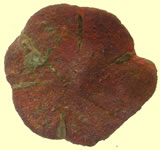 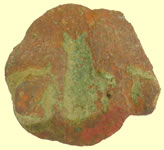 |
  |
||||||||||
| Medieval (1250-1450) sheet copper alloy (0.50mm thick) domed sexfoil belt mount | 17thC mount | ||||||||||
|
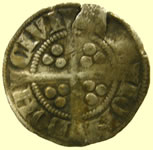 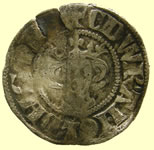 |
||||||||||
| Roman prick spur | 1344 Edward III hammered silver florin penny - Cross 1 Broken Obv EDWR ANGL DNS HYB Rev CIVI/TAS/LON/DON - London mint |
||||||||||
 |
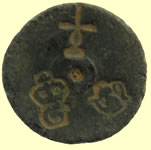 |
 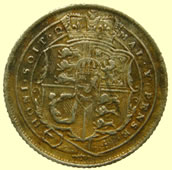 |
|||||||||
| Saxon lead token | George 1st tarde weight - Crown G cipher London | 1817 George III milled silver shilling | |||||||||
  |
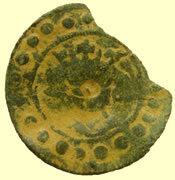 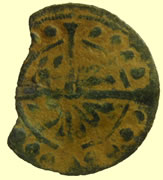 |
||||||||||
| 1565 Elizabeth 1st hammered silver 3 pence | 1321-43 Sterling bust English Jetton Edward II Class XV Rev - Long cross patonce Obv - Bust Class 15 in circle, border pellets |
||||||||||
  |
|
||||||||||
| 1594-6 Elizabeth 1st hammered silver half groat | 18thC silver decorated clog fastener | ||||||||||
 |
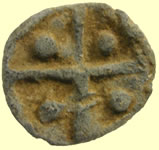 |
  |
|||||||||
| 15thC lead token | 15thC lead token | 1894 Victoria milled silver sixpence | |||||||||
  |
 |
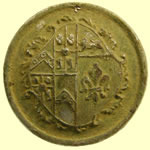 |
|||||||||
| 1920 George V milled silver shilling (12 pence) | Honourable East India Company |
19thC Corporation button | |||||||||
 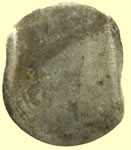 |
|
||||||||||
| 1696 William III milled silver sixpence - love token | Victorian Silver name tag - A.Y Patehcus - 2 Brecon House London N19 The Victorian block of flats still exists on Google |
||||||||||
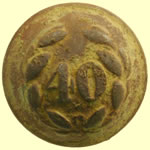 |
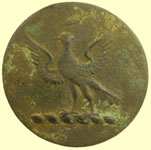 |
 |
|||||||||
40th Regiment of foot button O/R's - 1855-1881 |
19thC livery button | Domed 15thC lead token - possible trade weight | |||||||||
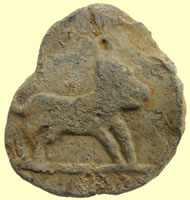 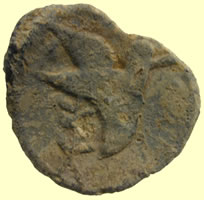 |
|||||||||||
| Great find, large 17thC lead medallion - matches smaller tokens of the period | |||||||||||
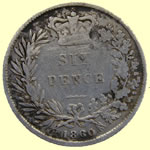 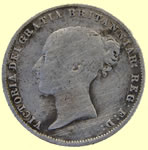 |
  |
||||||||||
| 1860 Victorian milled silver six pence | 1921 George V milled silver half crown (30 pence) | ||||||||||
  |
 |
||||||||||
| 1820 George III milled silver shilling | Size comparison , Half Crown, shilling and sixpence | ||||||||||
 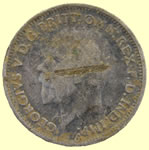 |
  |
||||||||||
| 1933 George V milled silver sixpence | 1871 Victorian milled silver six pence | ||||||||||
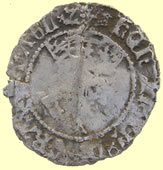 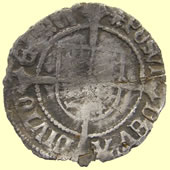 |
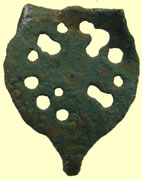  |
||||||||||
| 1526-44 Henry VIII hammered silver half groat | 16thC Tudor clothing fastener | ||||||||||
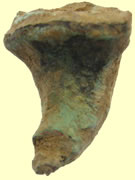 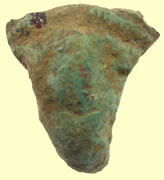 |
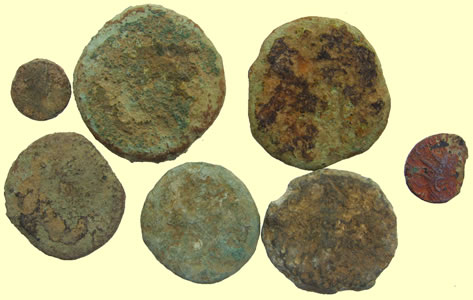 |
||||||||||
| 2ndC Roman fibular brooch | Roman 'grots' | ||||||||||
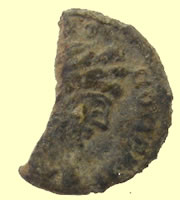 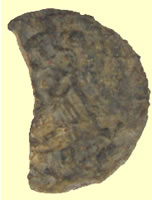 |
|||||||||||
4thC Roman silver coin - needs cooking to ID (John L) I'll have a quick look through volume V of RSC a bit later, since silver of this era is so much more scarce then the silver of other eras that I am quite a bit less familiar with it all. However, my first question would be - are you sure this is silver? There does appear to be enough detail for a relatively definitive ID. I'm not recognizing the name-fragment at 2:00-3:00 obverse, but that will be easily enough supplied. You seem to be working a far richer area these days - in both the sense of numbers of items found and of the relative wealth of the Roman-era residents. Mark
|
|||||||||||
  |
 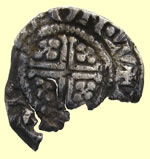 |
||||||||||
Roman sestertius sent for ID This one gave us "a lucky break" - literally - the break in the legend was a major bit of luck here. The only really clear letters in the obverse legend are "...CAE - SAR..." to the left and right at the top of the obverse. This is a really unusual circumstance - mostly if a sestertius' legends were broken at all at the top (rather than running continuously around the upper circumference) they generally broke between words - "HADRIANVS - AVGVSTVS" for example. That the word CAESAR was so prominently in the middle of the legend (and therefore the title) and also broken in an unusual, even awkward, place, meant that I could look for this among the coins of a couple of emperors during the time they were "heir apparent" Caesars under their usually adoptive paternal emperors. I believe I have an exact match here - although the crucial legend-break is a bit less visible on mine, but take my word that it breaks "...CAE - SAR..." at the top - http://www.stoa.org/gallery/album93/17_A_Pius_Sest_Pietas Antoninus Pius during his very brief period of being Hadrian's Caear and heir - in the short window of time, a few months in 138 AD. (February 25 - July 10) between the death of Aelius, Hadrian's intended successor, and Hadrian's own demise. The full obverse legend would be then: IMP T AELIVS CAE - SAR ANTONINVS - the apparent shape of the head had me thinking Antoninus Pius from the beginning, so I wasn't all that surprised to find this legend break on a relatively common (for a brief issue) sestertius of his as Caesar. It also seems that the "voids" - the areas retaining some smooth brown patina on the reverse, correspond to the portions of the reverse field - complete to the E of PIE -TAS across the field falling directly above the small altar - protected by the relief of the figure of Pietas and the altar to her left. |
1194 -1214 John hammered silver short cross penny - Class 4 Obv HENRICVS REX Rev TVRKILL.ON.EV - Moneyer Tvrkill of York mint |
||||||||||
 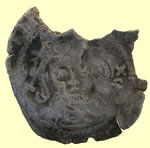 |
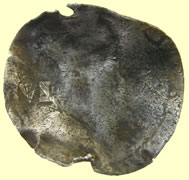 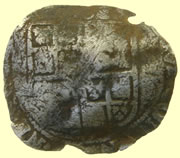 |
||||||||||
1427-1430 Henry VI hammered silver penny - Rosette Mascle issue Satires by hair, quadrefoil with pellet in reverse cross Obv HENRICVS REX ANGLIE Rev CIVI/TAS/EBO/RACI - York mint
|
1603 James 1st hammered silver sixpence | ||||||||||
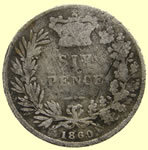 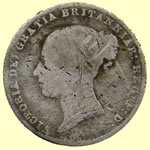 |
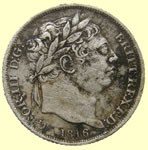 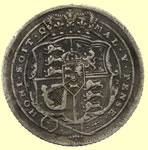 |
||||||||||
| 1860 Victorian milled silver six pence | 1816 George III milled silver sixpence | ||||||||||
|
|||||||||||
| 2ndC Roman silver coin - needs cooking to ID (Greg P) sent for ID | |||||||||||
 |
 |
 |
|||||||||
| 19thC snake buckle | 1550-1650 spur buckle | 1500-1700 mount | |||||||||
 |
 |
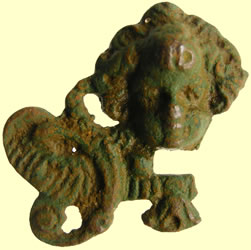 |
|||||||||
| 1550-1650 buckle | Victorian brooch | Georgian cherub mount | |||||||||
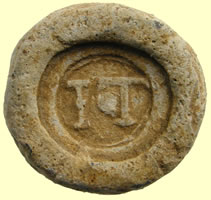 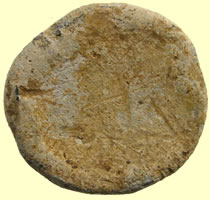 |
 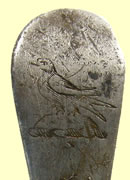 |
||||||||||
| 17thC lead trade weight | Georgian silver spoon handle - neat bird decoration | ||||||||||
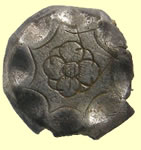 |
 |
 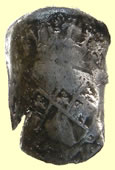 |
|||||||||
| 1770's Royal navy silver button | Victorian silver thimble | 1625 Charles 1st hammered silver half groat | |||||||||
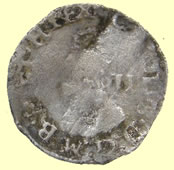  |
  |
||||||||||
| 1638-9 Charles 1st hammered silver half groat | 1351 Edward III hammered silver penny - Pre treaty Series A Extra annulet in one qtr on reverse Obv EDWARDVS REX ANGLIE Rev CIVI/TAS/LON/DON London mint |
||||||||||
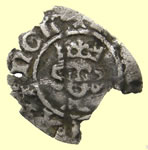 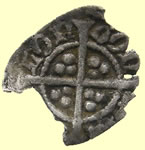 |
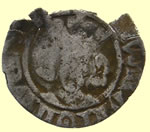  |
||||||||||
1310-14 Edward 1st hammered silver half penny Obv EDWARDVS REX ANGL Rev CIVI/TAS/LON/DON London mint |
1344 Edward III hammered silver florin penny Obv EDWR ANGL DNS HYB Rev CIVI/TAS/LON/DON - London mint |
||||||||||
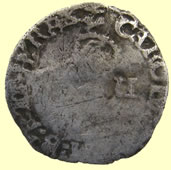 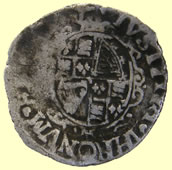 |
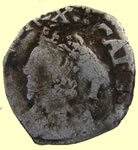 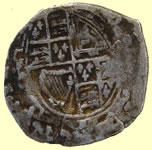 |
||||||||||
| 1638-9 Charles 1st hammered silver half groat | 1641-3 Charles 1st hammered silver penny - mintmark dot |
||||||||||
 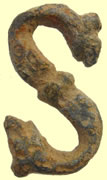 |
|||||||||||
| Romano/British hooked strap end | |||||||||||
|
|||||||||||
| Medieval purse bar with animal head decoration | |||||||||||
 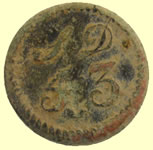 |
 |
||||||||||
| 1770's 5 shillings and 3 pence coin weight (1/4 gold guinea) | Georgian watch winders | ||||||||||
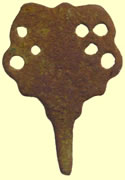  |
 |
||||||||||
| 16thC Tudor clothing fastener | Medieval barrel spout | ||||||||||
 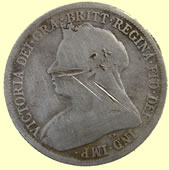 |
 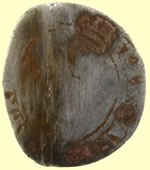 |
||||||||||
| 1898 Victoria milled silver shilling (12 pence) | 1578 Elizabeth 1st hammered silver 3 pence | ||||||||||
  |
 |
||||||||||
| 1594-6 Elizabeth 1st hammered silver half groat | 17thC Charles II silver button - reported as treasure to museum | ||||||||||
  |
 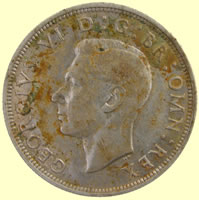 |
||||||||||
| Unusually large 15thC type 2 lead token | 1945 George VI milled silver half grown (30 pence) | ||||||||||
 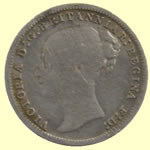 |
  |
||||||||||
| 1874 Victoria milled silver 3 pence | Roman bronze mount | ||||||||||
 |
 |
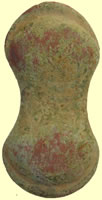  |
|||||||||
| 19thC livery button | 16thC Tudor fretwork button | 1500-1700 mount | |||||||||
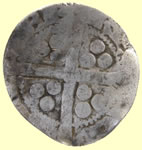  |
 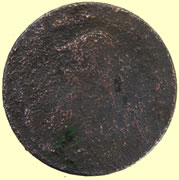 |
||||||||||
| 1279 Edward 1st hammered silver penny | Druid's Head on Obverse of 1788 Anglesey Token Parys Mines | ||||||||||
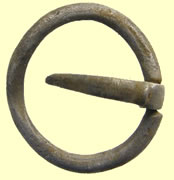 |
|||||||||||
| Medieval silver annular brooch - reported as treasure to museum | |||||||||||
 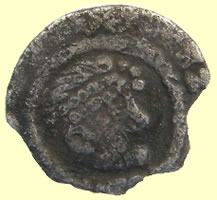 |
|||||||||||
Primary Saxon silver sceat 600- 700 AD - sent to Fitzwilliam museum for recording and ID 0.85g, 11.24mm Many thanks for this Series BIB sceat, which I have recorded as EMC 2012.0138. Best wishes, Martin |
|||||||||||
  |
|||||||||||
| Shewolf & Twins reverse which is typically found on the VRBS ROMA, City of Rome commemorative, reduced-module folles introduced around 330 AD Sent to Mark Lehman for confirmed ID So far as I can see in this state, it appears to be a completely normal VRBS ROMA city commemorative. It's a little unusual in not being as badly corroded as many British surface finds. At the size/weight, it probably dates to the 2nd period of production 335-337 (as late as 340 in some places). So far as I am able to speculate on the mint mark - based on what is currently visible plus the historical distribution of mints for the pieces found in Britain - it appears to be a Trier mint mark I think it's TR•P or TR☼P (with a dot or star in the 3rd position - the "P" in final position is the officina designation) Mark 2.15g, 17.19mm |
|||||||||||
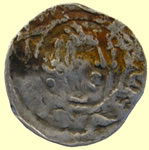 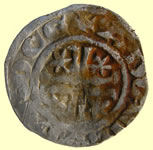 |
|||||||||||
1195 - 1230 William 1 The Lion of Scotland hammered silver penny - Short cross and stars issue Obv WILEMUS REX Rev ADAM ON RORE - Moneyer Adam of Roxburgh mint
|
|||||||||||
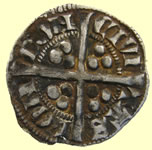  |
  |
||||||||||
1344 Edward III hammered silver florin penny - Cross 3 Obv EDWAR ANGL DNS HYB Rev CIVI/TAS/LON/DON - London mint |
1344 Edward III hammered silver florin penny - Cross 3 Obv EDWAR ANGL DNS HYB Rev CIVI/TAS/LON/DON - London mint |
||||||||||
  |
  |
||||||||||
| Druid's Head on Obverse of 1788 Anglesey Token Parys Mines | Taco'd Continental medieval hammered silver penny - Cross potent - needs straightening to ID Obv King sitting on throne *** RIC + Rev SAN/OST/XEN/NTA 18.92mm,1.22g |
||||||||||
 |
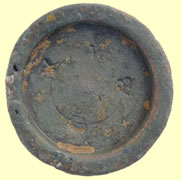 |
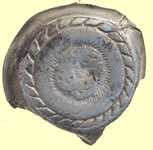 |
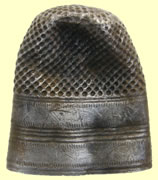 |
||||||||
| George II trade weight - Crown G cipher London | 1696 William III trade weight - Crown W cipher London | 1770's Royal Navy silver button | Georgian silver thimble | ||||||||
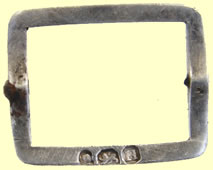 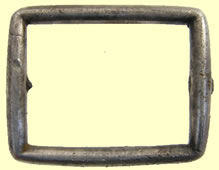 |
 |
 |
|||||||||
| 1803 Silver buckle - London hallmark | Medieval buckle | 16thC Tudor clothing fastener | |||||||||
  |
  |
||||||||||
| 2ndC Roman fibular brooch | 1215 Henry III hammered silver short cross half penny - Class 6 Obv HENRICVS REX Rev ** ANT + RO - Monyer Robert or Roger of Canterbury mint |
||||||||||
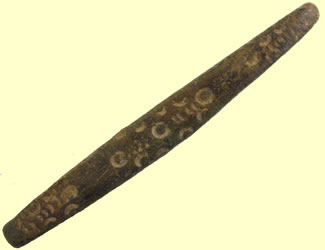 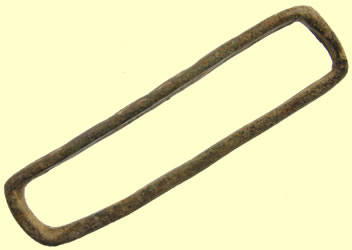 |
|||||||||||
| c8thC circle decorated Saxon belt slide | |||||||||||
 |
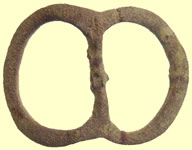 |
 |
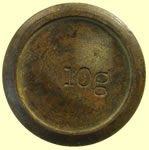 |
||||||||
| Roman buckle tongue | 1500-1650 buckle | 88th Regiment of foot button (Connaught Rangers) O/R's (Brass) - 1830-1871 |
20thC 10g trade weight | ||||||||
 |
  |
||||||||||
| Georgian horse bell | Taco'd Medieval hammered silver short cross coin - need straightening to ID type Obv HENRICVS REX |
||||||||||
 |
 |
 |
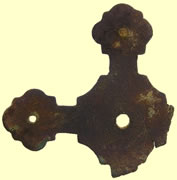 |
||||||||
| Medieval riveted gilded mount | Crown badge | 18thC button | Post medieval cross mount | ||||||||
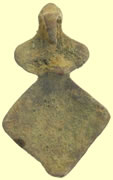  |
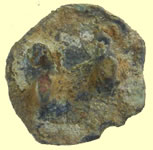 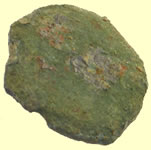 |
||||||||||
| 1500-1700 mount | 1500-1700 mount | ||||||||||
|
|||||||||||
Roman silver coin - cooking to clean up (Jim) 32 BC Mark Antony, Legionary silver Denarius. ANT.AVG.III.VIR.R.P.C Galley, Legionary Eagle between two standards |
|||||||||||
|
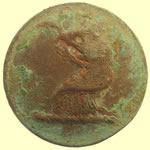 |
 |
|||||||||
| Medieval buckle | 19thC livery button |
|
|||||||||
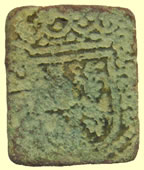 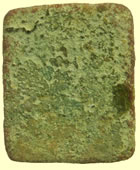 |
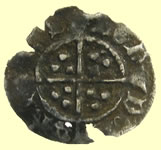 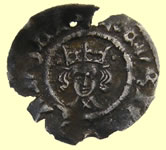 |
||||||||||
1422- 61 Bronze uniface Crowned Three lis in shield French Ecu gold coin weight 2.96g. Letters by the shield indicate French not English version. |
1422-61 Henry VI hammered silver half penny, satire issue- Satire on breast - Pellets by crown Obv +hENRIC REX ANGIL Rev CIVI/TAS/LON/DON - London mint |
||||||||||
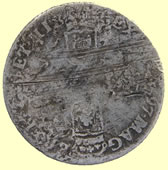 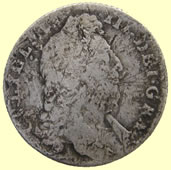 |
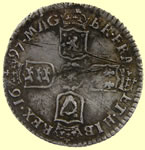  |
||||||||||
| 1697 William III milled silver shilling | 1697 William III milled silver sixpence | ||||||||||
 |
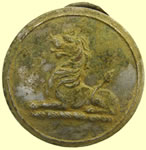 |
 |
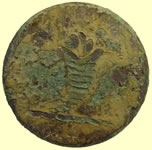 |
||||||||
| 18thC Royal Artillery button | 19thC livery button | 18thC silver button | 19thC livery button | ||||||||
 |
 |
 |
|||||||||
| GPO button ? | 15thC lead token | Medieval pot handle | |||||||||
|
 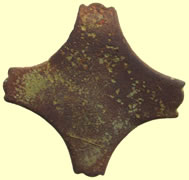 |
||||||||||
| Medieval buckle plate | 1500-1700 mount | ||||||||||
 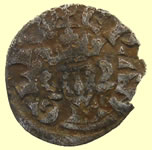 |
 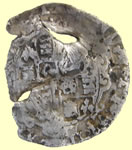 |
||||||||||
1300-10 Edward 1st hammered silver farthing, Class 10, bust to edge of flan Obv ER ANGLIE Rev LONDONIENSIS - London mint |
1625 Charles 1st hammered silver half groat | ||||||||||
  |
 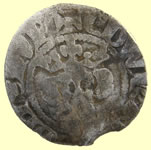 |
||||||||||
Taco'd Medieval hammered silver penny CIVI/TAS/EBO/RACI - York mint |
1344 Edward III hammered silver florin penny - Cross 1 Obv EDWR ANGL DNS HYB Rev CIVI/TAS/LON/DON - London mint |
||||||||||
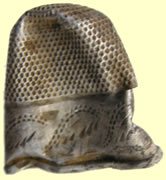 |
 |
  |
|||||||||
| Georgian silver thimble | 16thC Tudor button | 1924 George V milled silver shilling | |||||||||
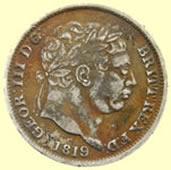 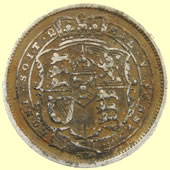 |
|
||||||||||
| 1819 George III milled silver shilling | Medieval buckle plate | ||||||||||
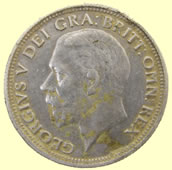  |
 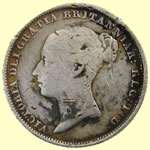 |
||||||||||
| 1932 George V milled silver shilling | 1840 Victoria milled silver sixpence | ||||||||||
  |
 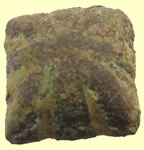 |
||||||||||
Irish 1216 -1272 Henry III hammered silver farthing Obv HENRICVS REX III Rev **DAV/ - Moneyer Davi of Dublin mint |
Medieval mount | ||||||||||
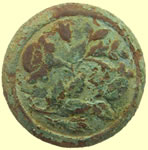 |
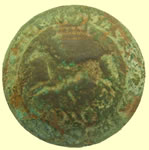 |
 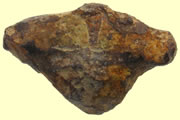 |
|||||||||
| Georgian button | Unrecorded 5th Dragoon guards button Crimera wars period | 2ndC Roman fibular brooch | |||||||||
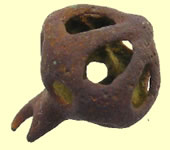 |
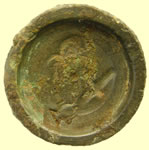 |
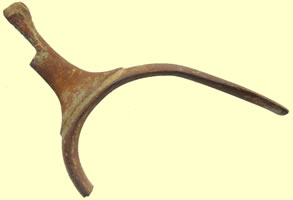 |
|||||||||
| 16thC Tudor button | Georgian trade weight - London | Georgian spur | |||||||||
 |
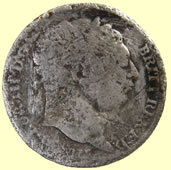  |
||||||||||
| Medieval pendant hanger | 1817 George III milled silver shilling | ||||||||||
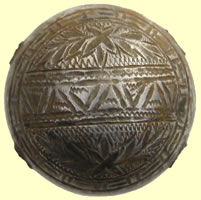 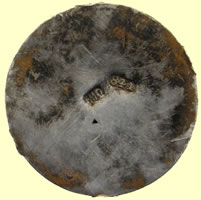 |
|||||||||||
Fascinating find - 1920's looking domed highly decorated silver jewelry item with 4 mounting points marked 84.1 % silver, maker MO Must be continental as not Sterling |
|||||||||||
|
|||||||||||
Stunning zoomorphic c10thC Saxon strap end - 2 rivet fixings still in place 50.35mm L x 9.61mm W ,13.14g |
|||||||||||
|
|||||||||||
| 1stC Celtic toggle fastener | |||||||||||
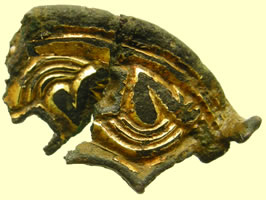 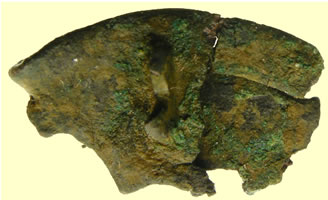 |
|||||||||||
| c8thC Saxon gilded disc brooch fragment | |||||||||||
  |
 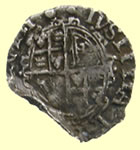 |
||||||||||
1344 Edward III hammered silver florin penny - Cross 3 Obv EDWR ANGL DNS HYB Rev CIVI/TAS/CAN/TOR - Canterbury mint |
1634-5 Charles 1st hammered silver penny - 2 dot mint mark | ||||||||||
 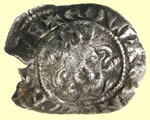 |
  |
||||||||||
1344 Edward III hammered silver florin penny - Cross 3 Obv EDWAR ANGL DNS HYB Rev CIVI/TAS/LON/DON - London mint |
1579 Elizabeth 1st hammered silver 3 pence | ||||||||||
 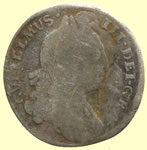 |
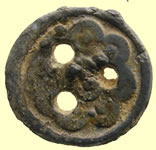 |
 |
|||||||||
| 1696 William III milled silver sixpence | Interesting 3 hole decorated pewter button | Georgian buckle | |||||||||
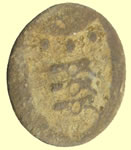 |
 |
 |
|||||||||
| 18thC Royal artillery button | 19thC hunting button | 18thC sword hanger | |||||||||
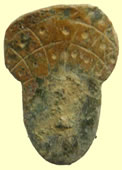 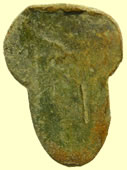 |
  |
||||||||||
| Not sure what this is but it has medieval type dot decoration | 1500-1700 mount | ||||||||||
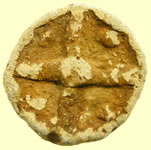 |
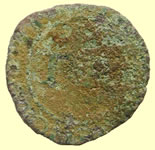 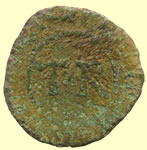 |
||||||||||
| 15thC lead token - type 2 | 17thC Thomas Reynolds bays maker of Colchester hammered copper farthing - undated type |
||||||||||
|
|||||||||||
2ndC Roman silver coin - into the 'cooker' to clean up - sent to Mark Lehman for provisional ID (Min) At this point, it appears to be a Flavian - Vespasian (69-79), Titus (79-81), Domitian, (81-96) - but I can't say much more at the moment. Mark I'm pretty sure I told you this was one of the Flavians - Vespasian or Titus most likely - and although I am still unsure which it is (I suspect it's Vespasian who has a similar issue from Lugdunum, but with a different obverse legend) the reverse is now clearly visible as a type copied from Augustus and Agrippa - Neptune standing left, foot on rock, holding dolphin and trident.. Unfortunately I don't have a really clear example of this reverse type on an official Roman issue coin, but I have this fairly close copy on a Limes Falsa As of Agrippa - http://www.stoa.org/gallery/album90/mark_agrippa_as_1 Okay, after doing some more research, I can now be certain that it's Vespasian - the obverse legend should be IMP CAES VEST AVG P M COS IIII - which would match-up the "...AVG P M..." which we can see on the obverse in the correct place in the legend. The reverse legend should be NEP RED, and although I can't be 100% certain from what's left on the coin, given the lamination issues, it appears that this reverse legend would work as well. Mark PS - here's a pretty reasonably clear example of the same type in use by Hadrian 50 years or so later - http://www.stoa.org/gallery/album92/ML03_Hadrian_Neptune_sest |
|||||||||||
 |
|
 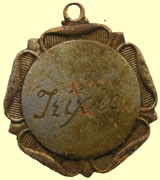 |
|||||||||
| Royal Artillery button | Victorian collar stud with glass stone | 'Trixie' from Staines Middlesex | |||||||||
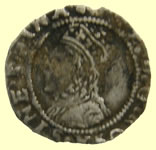 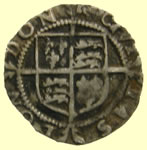 |
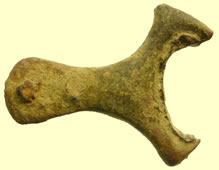  |
||||||||||
| 1595-8 Elizabeth 1st hammered silver penny | Saxon harness cheek piece | ||||||||||
|
|||||||||||
| Roman knopped bronze pin | |||||||||||
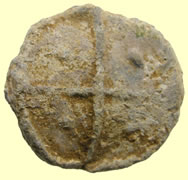  |
|||||||||||
| Very rare find, 15thC type 2 lead long cross and pellets lead token but with a detailed obverse. Appears to be two sword/daggers with the letter N | |||||||||||
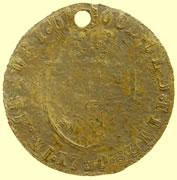  |
 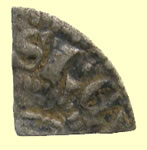 |
||||||||||
1790 George III gilded full guinea gaming token 'For the good old times' |
1247 Henry III hammered silver voided farthing Obv HENRICVS REX Obv ** VID/*** Moneyer David of London mint |
||||||||||
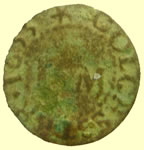  |
|
||||||||||
| 1665 John Milbanch of Colchester hammered copper trade farthing | Medieval buckle plate | ||||||||||
Eastern uninscribed gold quarter stater, type attributed to the Trinovantes, struck c 50-20 BC.
VA 260 = BMC (Hobbs) 482 and 489.
14.65mm,1.39g
|
|||||||||||
 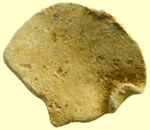 |
  |
||||||||||
| Very unusual 17thC lead token with shield design | 1918 George V milled silver sixpence | ||||||||||
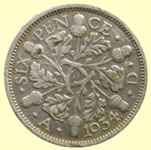 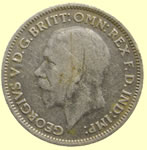 |
  |
||||||||||
| 1934 George V milled silver sixpence | 1634 Charles 1st hammered copper Rose farthing | ||||||||||
 |
|
||||||||||
| Medieval buckle | Georgian inscribed chest hinged clasp 'T U Ge/c/D' |
||||||||||
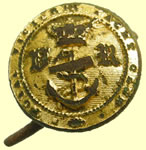  |
  |
||||||||||
| 19thC Royal Victoria Yacht club button | 1344 Edward III hammered silver florin penny Obv EDWR ANGL DNS HYB Rev CIVI/TAS/CAN/TOR - Canterbury mint |
||||||||||
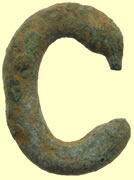 |
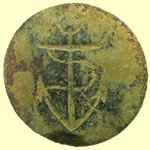 |
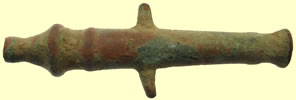 |
|||||||||
| Romano/British buckle | Capt / Commander - 1774-1787 |
18thC toy cannon | |||||||||
Medieval badges Ref Mitchiner p244 939 - 941
|
|||||||||||
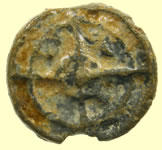 |
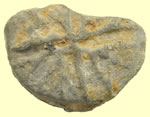 |
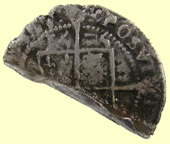  |
|||||||||
| Medieval boy bishop style lead token | 15thC lead token | 1575 Elizabeth 1st hammered silver half groat - Eglantine mint mark | |||||||||
 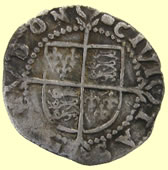 |
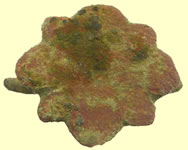 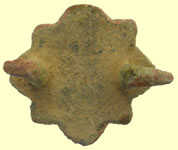 |
||||||||||
| 1594-6 Elizabeth 1st hammered silver half groat - Woolpack mint mark | Medieval mount with 2 integral lugs
Period from: MEDIEVAL Date from: Circa AD 1300 |
||||||||||
 |
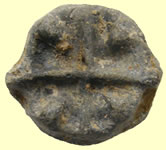 |
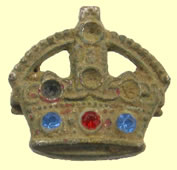 |
|||||||||
| Army lapel badge - Lancashire Fusiliers |
15thC lead token | Jewelled Army badge | |||||||||
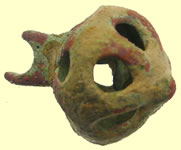 |
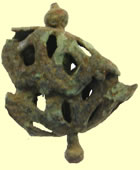 |
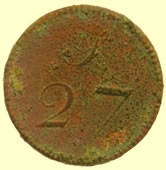 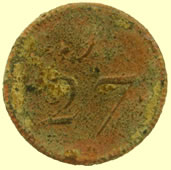 |
|||||||||
| 16thC Tudor button | 16thC Tudor fretwork jewelry item | 1770's coin weight | |||||||||
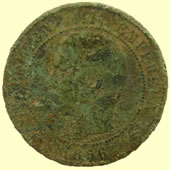  |
|
||||||||||
| 1856 Napoleon French coin | Large 1500-1700 mount with 3 integral lugs | ||||||||||
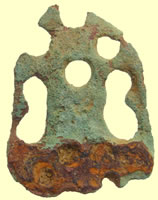 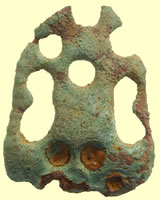 |
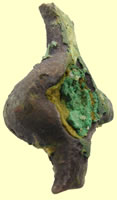 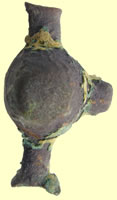 |
||||||||||
| Late Early Medieval (Anglo-Saxon) cast copper alloy stirrup strap mount of Williams Class A type 10B. | Incomplete late Early Medieval (Anglo-Saxon) to early Medieval cast copper alloy harness fitting, dating circa AD 1000 to 1150. | ||||||||||
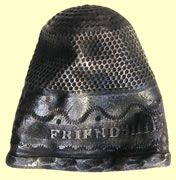 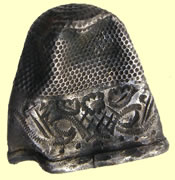 |
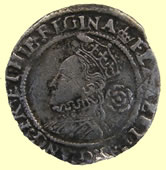 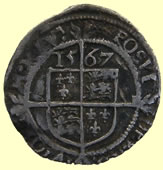 |
||||||||||
| Georgian silver thimble - 'Friendship' | Very crisp 1567 Ellizabeth hammered silver 3 pence | ||||||||||
 |
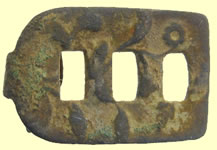 |
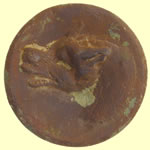 |
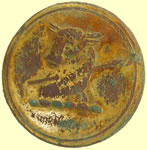 |
||||||||
| 1920's Girl Guides badge | 18thC clog fastener | 19thC hunting button | 19thC livery button | ||||||||
|
  |
||||||||||
| 1500-1700 mount | Georgian watch winders | ||||||||||
 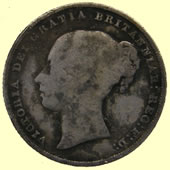 |
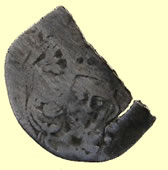 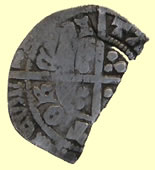 |
||||||||||
| 1844 Victoria milled silver shilling (12 pence) | 1327 Edward III hammered silver half groat Rev CIVI/TAS/CAN/TOR - Canterbury mint |
||||||||||
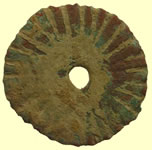 |
 |
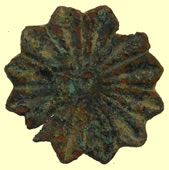 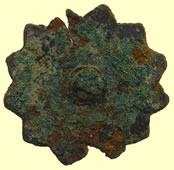 |
|||||||||
| Georgian pastry jigger | Roman buckle tongue | 1500-1700 mount | |||||||||
|
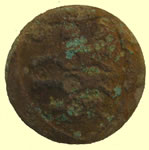 |
 |
|||||||||
| Roman helmet trim | 18thC Royal artillery button | Capt / Commander - 1774-1787 |
|||||||||
  |
|||||||||||
| Cast copper alloy mount of probable late medieval or post medieval date (1400-1600). The mount is sub-oval in plan and domed in cross section (D-shaped). | |||||||||||
|
|||||||||||
Debased silver Roman coin sent for ID - soaking to clean it more as 'cooking' could damage it
20.75mm This piece presents a couple of problems. Generally speaking, it appears to be either an official or reasonably well-done unofficial piece for Tetricus I, whose portrait appears to be on the obverse - generally speaking, this is none too unusual, as you're probably aware. Unofficial (and official) Tetricus radiates are found all over Britain all the time. 1st problem - the legend, although at first glance it seems to be "literate", it doesn't line up with any known legend on a radiate of this period - and I'm talking about everyone including the issuers of post-reform radiates after Diocletian's reforms - ie: the previous 15 and the next 30 years, at minimum, from Tetricus' time. OK, there were plenty of "imaginative" legends placed on unoffically produced coins, up to and including the lettering becoming a merely decorative border of "I's" and "O's", etc. But this is tantalizingly close to looking like it should be a legit legend. 2nd problem - the reverse - and as you can tell, there isn't a lot to go on - seems to be of the CONSECRATIO / lighted altar enclosure with panelled front. These are exceedingly common for Claudius II, Gothicus, but the legend on the obverse is nothing like any legend ever seen on a Gothicus posthumous piece. There were no posthumous issues for Tetricus - he was rewarded for giving up the Gallic Empire to Aurelian without a fight, retired into private life and died in bed in a villa in Italy an unknown length of time afterwards as he disappears from the historical record at that point. I'm stuck with saying that it's a contemporary copy of the so-called "barbarous radiate" type, emulating a prototype - a very common posthumous issue of Claudius II (with a portrait that favors Tetricus I) - except that instead of copying the simple DIVO CLAVDIO or any of Tetricus' legends, the diecutter went wild and made up a 25 or 30 character obverse legend - typically unofficial diecutters shortened and simplified legends - they didn't make them longer and more involved, particularly when making them look as though they were a literate and legitimate legend. For those reasons, this is one of the most unusual radiates of this period I have ever seen. Mark |
|||||||||||
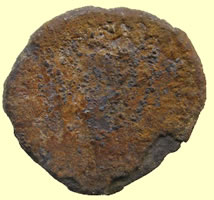  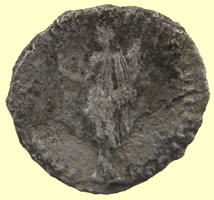 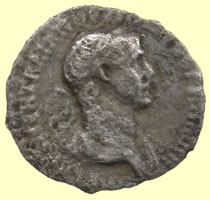 |
|||||||||||
| 2ndC Roman silver coin - nearly cooked (Greg P) sent for ID | |||||||||||
10 to 40 AD Northern Celtic gold 1/4 stater of Cunobelin Inscribed CAM CV AGR Ref Hobbs 1854 12.3mm.1.26g |
|||||||||||
50 BC Celtic gold full stater - Clacton type 6.43g, 20.30mm Ref Hobbs 142
Size comparison between full and 1/4 staters
|
|||||||||||
Three different gold colours to form single ring - London hallmark 9 carat 1973 - 6.87g Maker JS & Co |
|||||||||||
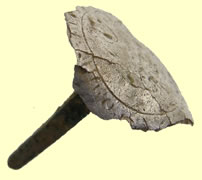 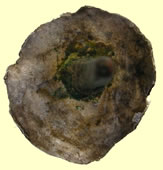 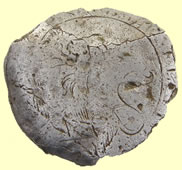 |
|||||||||||
Facinating find - 17thC silver mount with Lion etched seated with a curly tail and inscription on edge - 17thC text illegible Reported as treasure to museum |
|||||||||||
  |
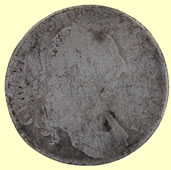 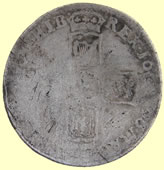 |
||||||||||
| 1900 Victoria milled silver Florin (24 pence) | 1696 William III milled silver shilling | ||||||||||
  |
  |
||||||||||
| 1500-1700 mount | 17thC lead bale seal | ||||||||||
 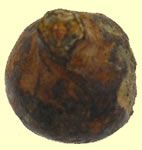 |
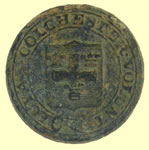 |
||||||||||
| Roman pin head | Royal Colchester Volunteers button - Napoleonic wars | ||||||||||
 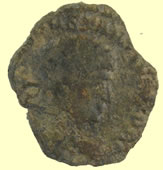 |
|||||||||||
| Mid 4thC House of Constantine Roman bronze coin - two soldiers standing | |||||||||||
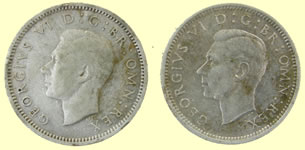 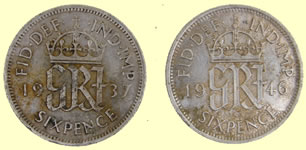 |
|||||||||||
| 1937 & 46 George VI milled silver sixpences | |||||||||||
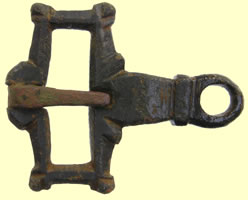 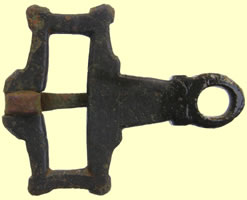 |
|||||||||||
| Stunning medieval buckle | |||||||||||
|
|||||||||||
| 11,000 BC flint scraper | |||||||||||
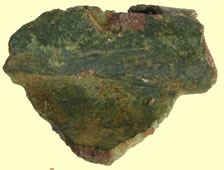 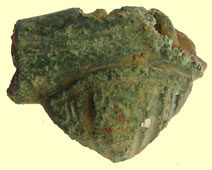 |
  |
||||||||||
| 2ndC Roman fibular brooch | Saxon hooked mount | ||||||||||
  |
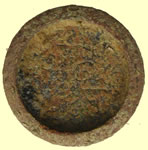 |
||||||||||
| Medieval knife pommel | 2oz Victorian trade weight | ||||||||||
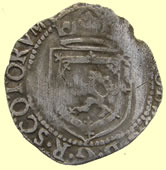 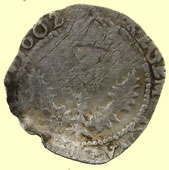 |
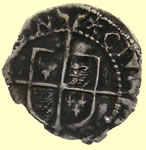 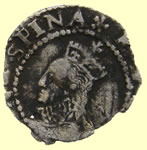 |
||||||||||
| Scottish 1602 James VI hammered silver 1/8th Thistle Merk | 1573- 8 Elizabeth 1st hammered silver penny - Eglantine mint mark | ||||||||||
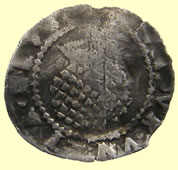 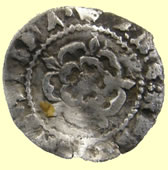 |
 |
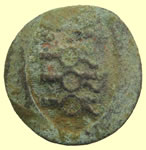 |
|||||||||
| 1607-9 James 1st half groat - Crown mint mark | WWII Royal tank corp | 18thC Royal artillery button | |||||||||
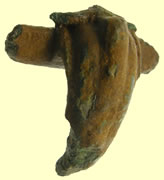 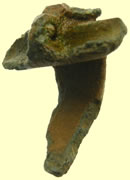 |
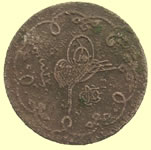 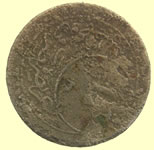 |
||||||||||
| 2ndC Roman head stud type fibular brooch | Ottoman Empire coin - not checked ref books yet | ||||||||||
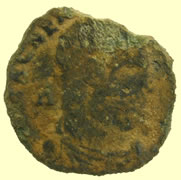 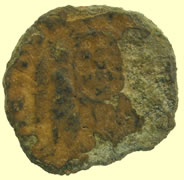 |
|||||||||||
Magnentius & Decentius - a fairly short-lived (350-353 AD) Augustus/Caesar pair of the sort promoted to Augustus, ad-hoc, by their legions. This was a very common story during the chaos-years of the later 3rd century, but happened far less often in the 4th. Magnentius had been a top general of Constans' - his army proclaimed him Augustus and since Constans did him the favor of being captured and executed conveniently quickly - within a few months - Magnentius was duly recognized as Augustus in most of the Western provinces in 350. The next year he elevated his little brother Decentius to be his colleague Caesar.
Constantius II was not pleased by the Western upstarts and within 2 years had defeated them in a couple of significant battles. Realizing the jig was up, they both committed suicide in 353.
Although these reverse types are known for other rulers (for whom they are pretty rare), they are especially associated with Magnentius & Decentius, both of whom were always portrayed "bare headed" - no laurels or diadems, etc. - and both of whom sported distinctive "mullett" hairdos like you see on the clearest specimens here. Since I believe the obverse legend on that nice one of Bruce's ends in "AVG", I'd say it's most likely Magnentius. Any on which the obverse legend ends (around 5:00) in CAES, CAESAR, NOB C, or NC can safely be assumed to be Decentius.
The type with the 2 Victories resting shield inscribed: VOT / V / MVLT / X on a cippus (or just holding it between them) woul have a legend like: VICTORIAE DD NN AVG ET CAES - and was common for both of them.
|
|||||||||||
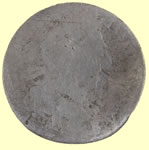 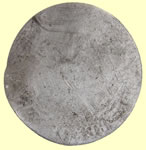 |
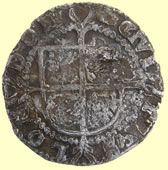  |
||||||||||
| 1696 William III milled silver sixpence | 1590-2 Elizabeth 1st hammered silver half groat - Hand mint mark | ||||||||||
As dug
'Cooked' up really well
|
|||||||||||
| BC Roman silver - sent for ID | |||||||||||
  |
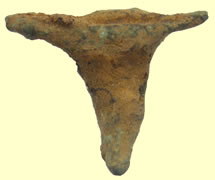 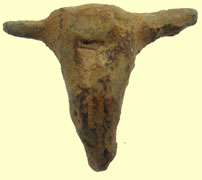 |
||||||||||
1351-61 Edward III hammered silver penny - Pre Treaty Durham Annulet in one quadrant on reverse Obv EDWARDVS REX
|
2nd C Roman fibular brooch - headstud type | ||||||||||
 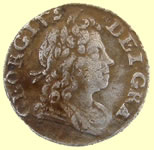 |
  |
||||||||||
| Rare find 1727 George 1st milled silver penny | 1294-99 Edward 1st hammered silver farthing - Type 20a Rev ER ANGLL AN Rev CIVI/TAS/LOND/DON - London mint 0.30g, 11.41mm |
||||||||||
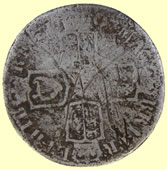 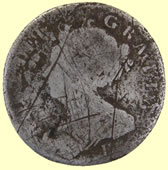 |
 |
||||||||||
| Very Rare 1707 Anne milled silver shilling - E below bust - Edinburgh mint | Medieval farthing next to milled silver shilling for size | ||||||||||
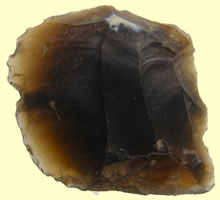 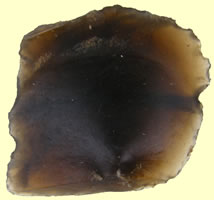 |
|||||||||||
| 11,000 BC flint scraper | |||||||||||
Cooked debased Roman silver coin - sent off for final ID now I have cleaned up obverse Now that you have it more cooked, I can see what the major problem was with my original guesswork. This isn't Tetricus or any of the Gallic emperors. Although I still can't read the legend with any certainty, on the strength of the portrait, I'm 90+% certain this is Philip I "the Arab", 244-249 AD. It also seems to be a higher-silver alloy than would be found in a Gallic Empire piece 20 years later. This alloy would be consistent with the time-frame for Philip. http://www.stoa.org/gallery/album102/ML_24_Philip_I_Nobilitas_ant Although any detail I thought I saw on the reverse seems to be gone now, it may be that the reverse is something like this SAECVLARES piece issued for the Millennium of Rome in 248 with a cippus - or low column or plinth design. http://www.stoa.org/gallery/album102/ML_25_Philip_I_Saeculares_ant Mark
|
|||||||||||
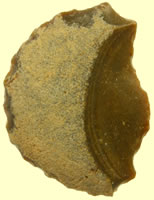  |
|||||||||||
| 11,000 BC flint scraper | |||||||||||
 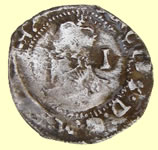 |
 |
 |
|||||||||
| 1634 Charles 1st hammered silver penny | Australian Military Forces button | 17thC lead token | |||||||||
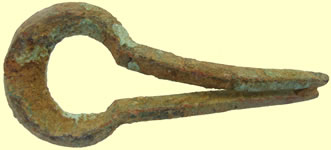 |
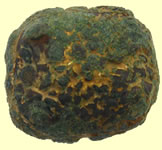 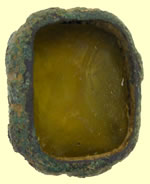 |
||||||||||
| Georgian Jews harp | |||||||||||
  |
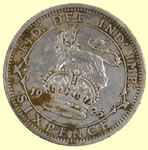  |
||||||||||
| 1831 William IV milled silver sixpence | 1925 George V milled silver sixpence | ||||||||||
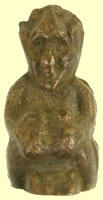 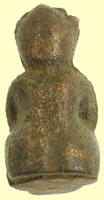 |
 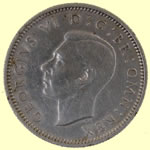 |
||||||||||
| 20thC brass figurine | 1944 George VI milled silver sixpence | ||||||||||
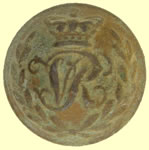 |
 |
||||||||||
| Victorian Royal Engineers button | Victorian gold pencil fragment | ||||||||||
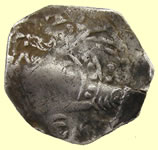 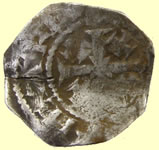 |
  |
||||||||||
| 1158 -1189 AD Henry II hammered silver penny ' Tealby' cross and crosslet type | 1344 Edward III hammered silver florin penny – Obv EDWAR ANGL DNS HYB Rev CIVI/TAS/LON/DON – London mint | ||||||||||
Stunning Roman mount with face decoration |
|||||||||||
  |
 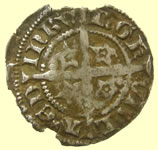 |
||||||||||
1413 -22 Henry V hammered silver penny - mullet, broken annulet by crown - Inital mark Cross Pattee Quadrefoil at centre of reverse cross Rev CIVI/TAS/EBO/RACI - York mint |
Scottish 1357-1367 David II hammered silver penny - 2nd coinage - Stars with 5 points with pellet at centre Obv DAVID REX SCOTTORUM - king of Scots Rev VILLA EDINBURGH - Town of Edinburgh |
||||||||||
 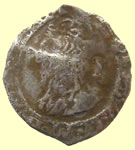 |
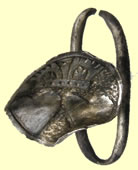 |
||||||||||
| 1634 Charles 1st hammered silver penny | 17thC Charles II silver button - reported as treasure to museum | ||||||||||
  |
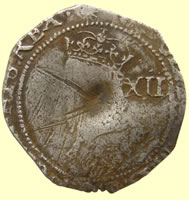 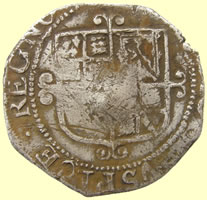 |
||||||||||
| 1573-8 Elizabeth 1st hammered silver half groat – Martlet mint mark | 1645-6 Charles 1st hammered silver shilling (12 pence) – Sun mintmark | ||||||||||
  |
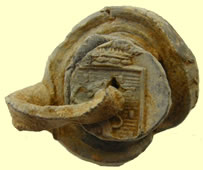 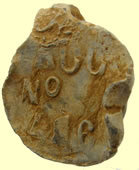 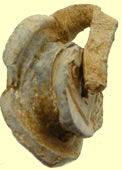 |
||||||||||
| 1649 Commonwealth hammered silver half groat | 17thC Dutch cloth seal | ||||||||||
  |
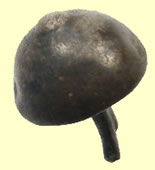  |
||||||||||
| Medieval annular brooch | 17thC silver nipple button - reported as treasure to museum | ||||||||||
  |
|||||||||||
| Medieval knife quillion | |||||||||||
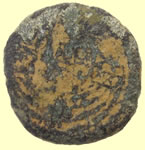  |
 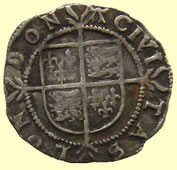 |
||||||||||
| 14th/15thC 1/2 Gold Ryal - King with sword and shield standing in a ship type with rose coin weight 2.98g | 1582-4 Elizabeth 1st hammered silver half groat | ||||||||||
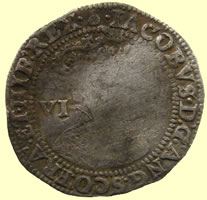 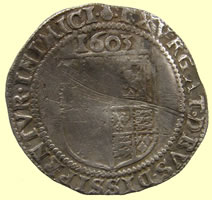 |
 |
||||||||||
| 1603 James 1st hammered silver sixpence | Georgian silver thimble | ||||||||||
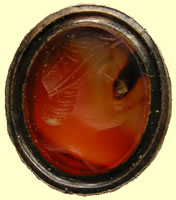 |
  |
||||||||||
| Georgian intaglio | 1794 CONDOR CONDER TOKEN NORFOLK NORWICH HALF PENNY A9 - 11 Obverse: View of Castle and Bridge with Shrubs; around 'Norwich Castle'; Reverse: A Fleece Lamb; around 'Good Times Will Come' MDCCXIV (barely visible with a loop) Edge: Richard Bacon Cockey Lane Chocolate brown |
||||||||||
|
|||||||||||
| Interesting design of a 16thC Tudor purse bar with scroll and enamel decoration | |||||||||||
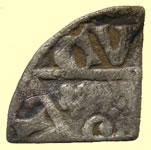  |
  |
||||||||||
1216-1272 Irish Henry III voided long cross ¼ penny – Rev DAV – Moneyer DAVI of Dublin mint |
1199 John hammered silver short cross half penny - Class 5 Obv HENRICVS REX Rev +WILLELM - Moneyer Willelm of London mint
|
||||||||||
 |
 |
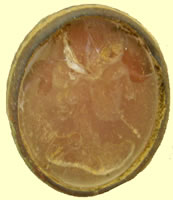 |
|||||||||
Very unusual medieval lead token - longcross with 4 pellets in one quadrant, single pellet in opposing quadrant and letters in two other quadrants - W Never seen a medieval lead token with issuers initials |
17thC William III tarde weight - Crown I cipher | Georgian Roman bust intaglio | |||||||||
  |
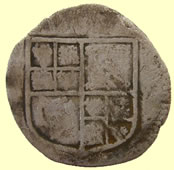 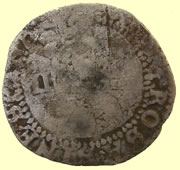 |
||||||||||
| 4thC House of Constantine Roman bronze coin | 1603 James 1st hammered silver half groat | ||||||||||
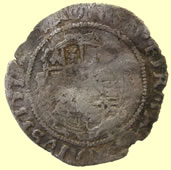 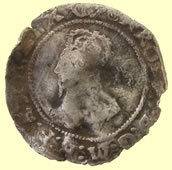 |
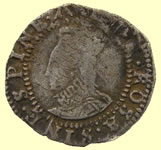  |
||||||||||
| 1634 Charles 1st hammered silver penny | 1582-4 Elizabeth 1st hammered silver half groat A mint mark | ||||||||||
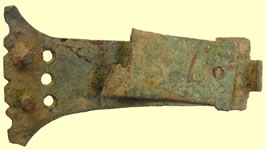  |
|||||||||||
| Medieval book clasp | |||||||||||
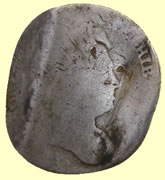 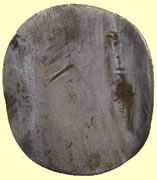 |
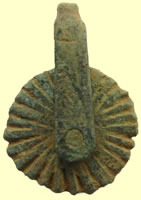  |
||||||||||
| 1714- 1727 George 1st milled silver love token | Georgian pastry jigger | ||||||||||
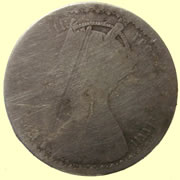 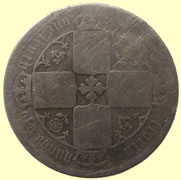 |
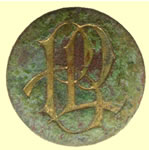 |
||||||||||
1851 -1863 Gothic numeral Victorian milled silver florin (24 pence) |
Georgian Monogrammed and gilded stud – ‘PP’ | ||||||||||
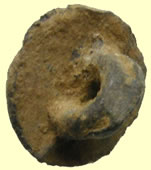 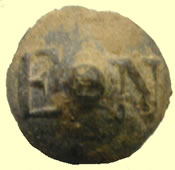 |
  |
||||||||||
| 17thC pewter monogrammed nipple button – ‘EN’ | 17thC lead mount | ||||||||||
  |
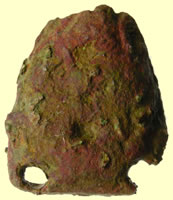  |
||||||||||
18thC apothecary weight |
C10thC Saxon stirrup mount | ||||||||||
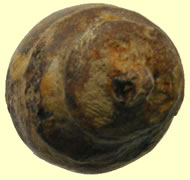 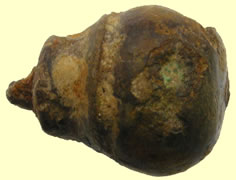 |
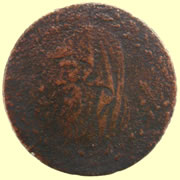 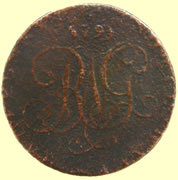 |
||||||||||
| Medieval bronze dagger pommel | 1793 Half Penny North Wales OBVERSE: Druid's Head, 29 acorns in wreath. |
||||||||||
  |
|
||||||||||
1464 Edward IV hammered silver half groat - light issue Canterbury 'Royal'- Rose mintmark Obv EDWARD DI GRA REX ANGL FRA Rev CIVI/TAS/CAN/TOR - CANTERBURY MINT |
1247 Henry III hammered silver voided long cross half penny – Rev OLE/ONC – Moneyer Nicole of Canterbury mint |
||||||||||
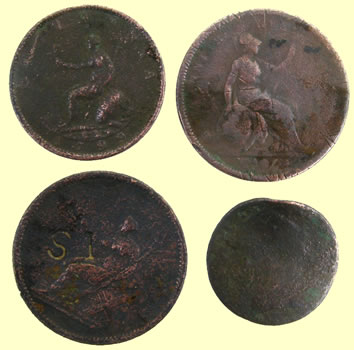 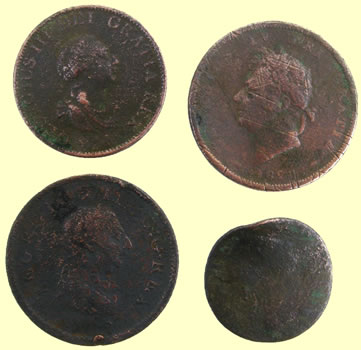 |
|||||||||||
| Cleaned up old coppers | |||||||||||
1560-1 Elizabeth 1st hammered silver shilling - Martlett mint mark |
|||||||||||
  |
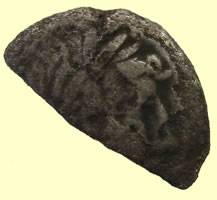 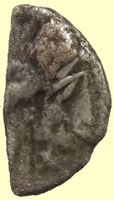 |
||||||||||
1344 -1351 Edward III Third 'Florin'coinage hammered silver penny |
Cooked BC Roman silver cut half - sent for ID | ||||||||||
Amazing fixing job on this flattened taco'd penny 1205 Willam 1 The Lion - Scottish hammered silver penny Obv LE REIWILAM Rev HUE WALTER Moneyer Walter of Perth, Edinburgh and Roxburgh mints
June 1361-1369 Edward III hammered silver half groat - Treaty B - double annulet and satire stops, Treaty X Obv EDWARDVS REX ANGL DNS HYB Rev
This badly Taco'd and cracked coin broke during straightening but can be resoldered and joined. 1247 Henry III hammered silver long cross penny - Class 5 Obv HENRIVC REX III Rev hEN/RIO/LVN/VND- Monyer Hneri fo London |
|||||||||||
 |
 |
||||||||||
| Medieval (1250-1500) cast copper alloy hooked bar mount. | George 1st trade weight – Crown G London | ||||||||||
 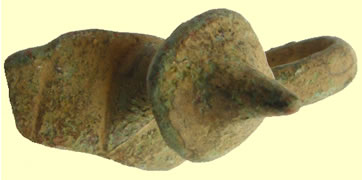 |
|||||||||||
C 1450 medieval prick Spur. Cast spur with a large quadrilateral goad in a short neck Gilding appears on the display surfaces and the goad, and an attractive patina extends overall. The form and condition is consistent with a late medieval or post-medieval date; this spur was probably worn in a civilian context given the short neck of the goad.
|
|||||||||||
 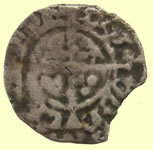 |
  |
||||||||||
1377-99 Richard II hammered silver half penny - Type 2 Obv +RICHARD x REX ANGLI Rev CIVI/TAS/LOND/DON - London mint |
1562 Elizabeth 1st hammered silver three pence | ||||||||||
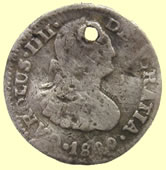 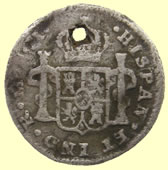 |
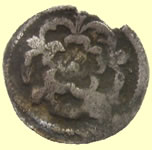 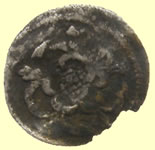 |
||||||||||
Tiny 1800 Carlos IIII Spanish milled silver 1/2 Real |
Tiny 1625 Charles 1st hammered silver half penny - rose both sides, no legend type | ||||||||||
  |
  |
||||||||||
1247 Henry III hammered silver voided longcross cut 1/4 penny Moneyer Henri |
1422 1427 Henry VI hammered silver penny - annulets on two qtrs on obv Rev CIVI/TAS/L *** London mint |
||||||||||
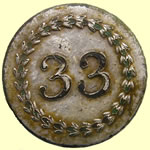 |
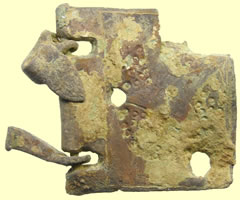 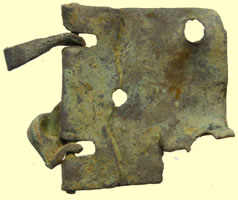 |
||||||||||
| THE 33RD REGIMENT OF FOOT. / After 1881 :- 1st Battalion The Duke Of Wellington's (West Riding) Regiment O/R's & Officer - 1782-1840 |
Medieval gilded buckle plate | ||||||||||
  |
 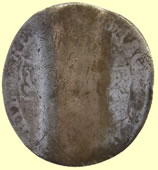 |
||||||||||
| 1569 Elizabeth 1st hammered silver sixpence | Rare find - 1704 Anne milled silver love token - Exeter mint | ||||||||||
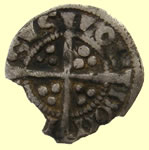  |
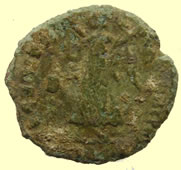 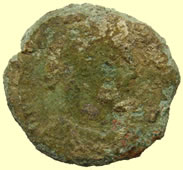 |
||||||||||
1280-82 Edward 1st hammered silver farthing - Type 13 Rev ER ANGLIE Obv LONONIENSIS - London mint |
Victory walking left holding wreath and palm, is from after the end of the Constantinian era. I believe it names Gratian, 367-383 and I also believe it's from the mint at Lyon, although the mint mark isn't very clear and the GLORIA ROMANORVM & SECVRITAS REIPVBLICAE types introduced in the Valentinian Dynasty were among the first to employ a really complex field-and-mint mark control system, so there are an enormous number of combinations for each mint combining various marks in the fields and exergue.
|
||||||||||
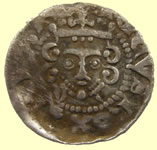 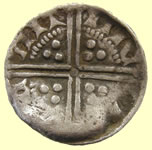 |
  |
||||||||||
1247 Henry III hammered silver long cross penny - Class IIIb Rev NIC/OLE/ONC/ANT Moneyer Nicole of Canterbury mint |
1607 Scottish James VI hammered silver half groat | ||||||||||
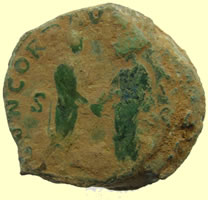 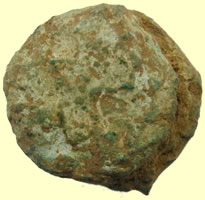 |
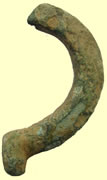 |
||||||||||
| Two large 2ndC Roman bronze coins stuck together | Saxon bow brooch fragment | ||||||||||
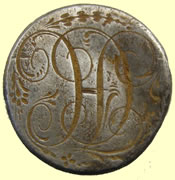 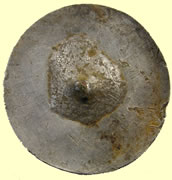 |
  |
||||||||||
| Monogrammed silver Georgian button | Saxon lead token | ||||||||||
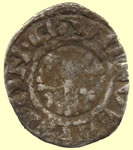 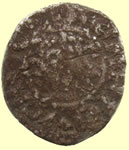 |
 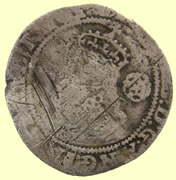 |
||||||||||
1189-1199 Richard 1st hammered silver short cross penny - Class 1 to 4 Rev VLARD ON CANT - Moneyer Vlard of Canterbury mint |
16thC Elizabeth 1st hammered silver sixpence | ||||||||||
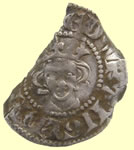  |
  |
||||||||||
| 1344 Edward III hammered silver florin penny - Obv EDWR ANGLE DNS HYB Rev CIVI/TAS/LON/DON - London mint | 1891 Victoria milled silver half crown | ||||||||||
  |
|||||||||||
1stC BC Cunobelin Celtic silver coin - 'cooking' it to remove crust C4 (M215, V2045, BMC 1863-65) Obv. head 1., spiky hair floating behind head. Variety with pointed ?bearded chin has CAM in front, VL behind head; others with less pointed chin have CAMV or CAMVL in front. Pellet border. Rev. seated Victory r., holding bowl in outstretched r. hand. Pellet in ring in front. CVNO below exergual line. Pellet border. |
|||||||||||
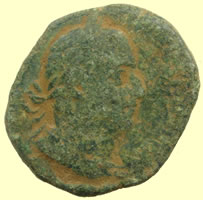  |
  |
||||||||||
| 2ndC Roman bronze coin sent for ID | 1215 Henry III hammered silver short cross farthing – Canterbury mint | ||||||||||
 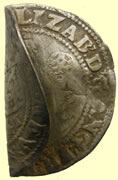 |
|
||||||||||
| 1592 Elizabeth 1st hammered silver sixpence | |||||||||||
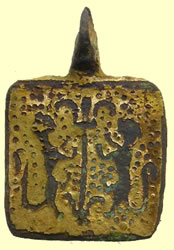 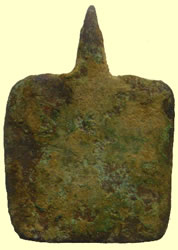  |
|||||||||||
| Stunning gilded medieval harness pendant | |||||||||||
See more finds on the 2012 Feb Finds Page 1 |
|||||||||||
 |
|||||||||||
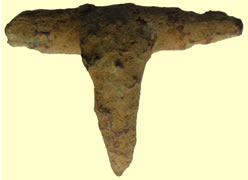

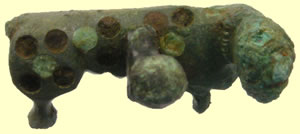
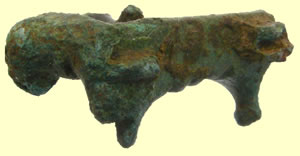
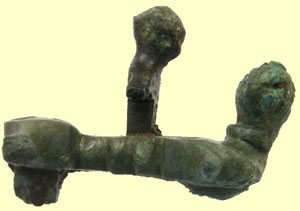
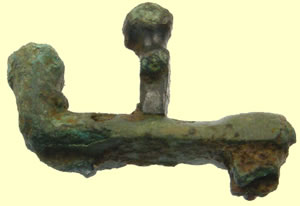
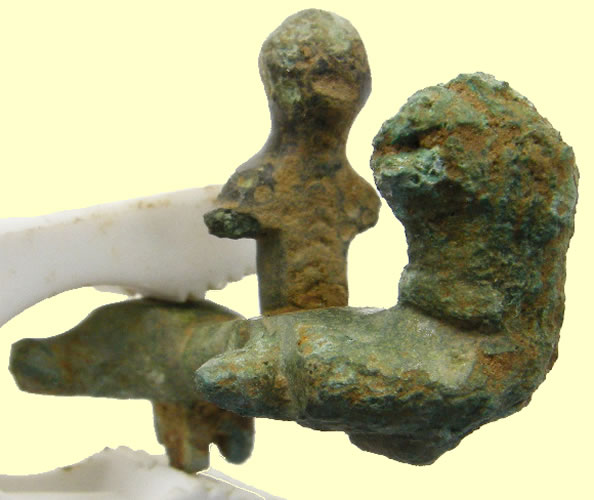
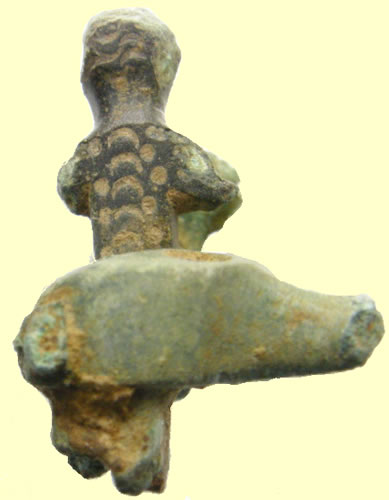

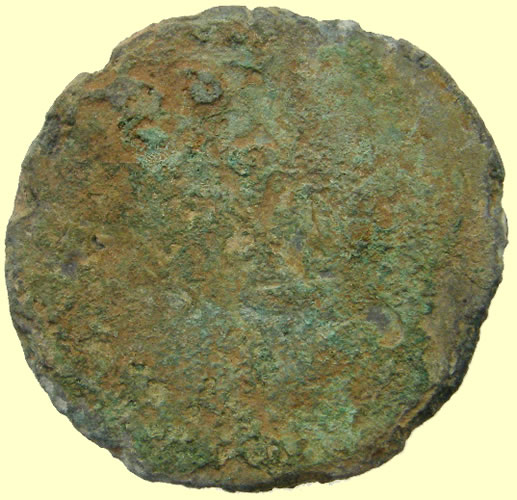




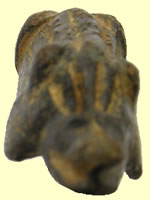
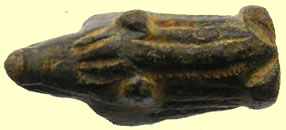
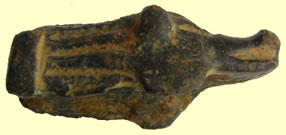

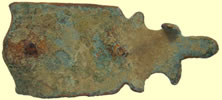
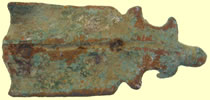
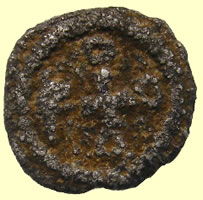

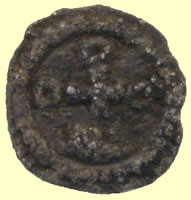
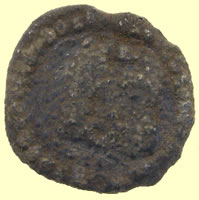
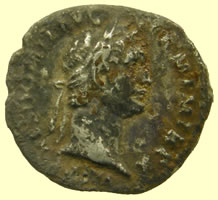
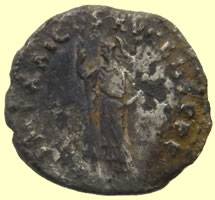
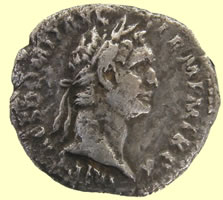
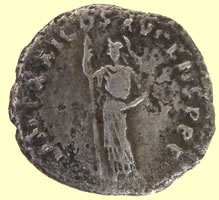

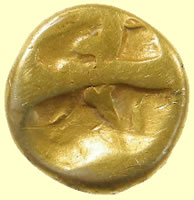
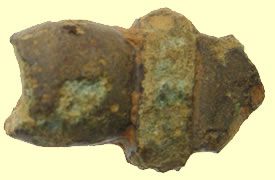

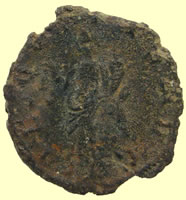
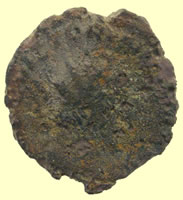
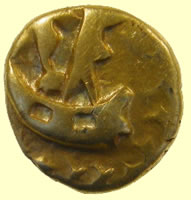
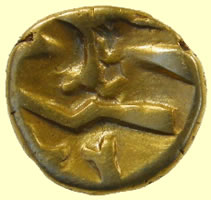
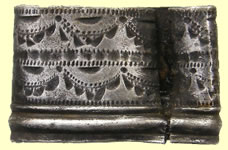
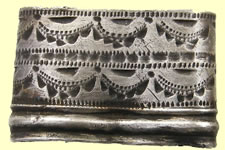
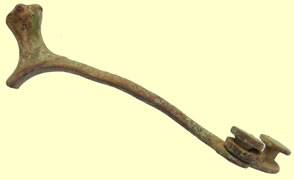


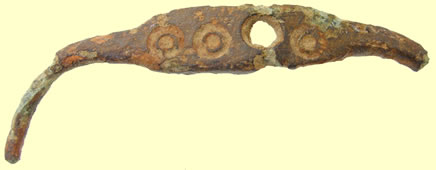
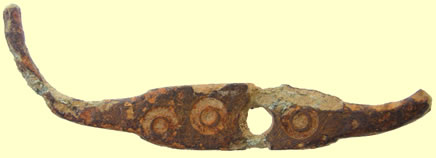
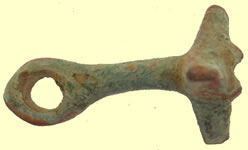
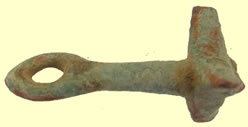



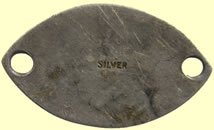
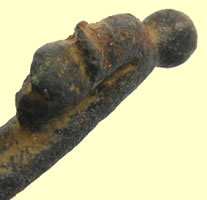


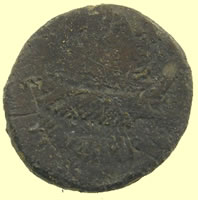

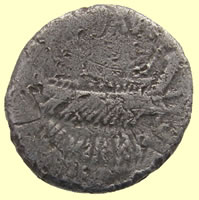
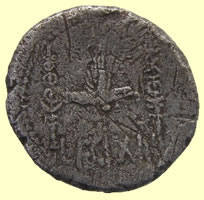
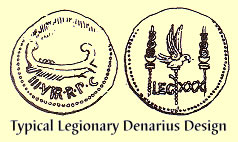




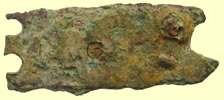





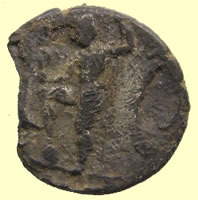
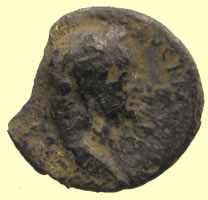
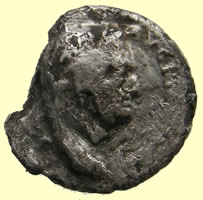
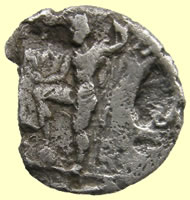

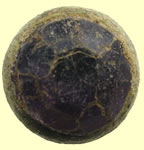



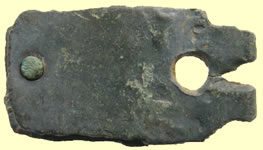
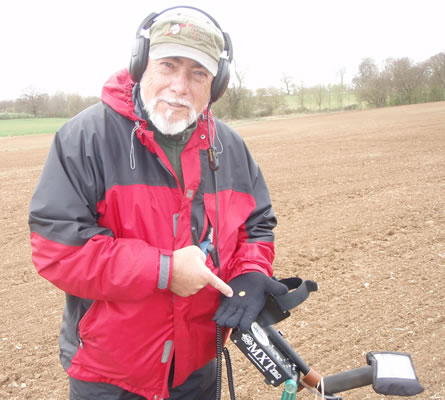
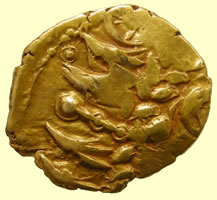
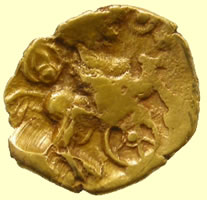

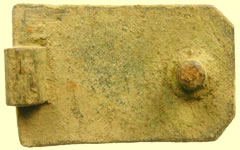
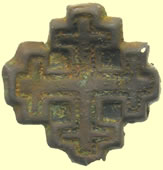
 'A badge for a Knight of the Order of the Holy Sepulchre in bronze and dating somewhere around C13/14th possibly very slightly later . This is a very scarce item and it relates to The Equestrian Order of the Holy Sepulchre of Jerusalem being a Catholic chivalric order of Knighthood that traces its roots to Godfrey of Bouillon, principal leader of the First Crusade. According to reliable sources in the Vatican and Jerusalem, it began in historical reality as a mixed clerical and lay confraternity (association) of pilgrims which gradually grew around the most central of the Christian holy places in the Middle East, the Holy Sepulchre or the tomb of Jesus Christ.This would have been a pin for a member of the order , there is a mark on the reverse where the original pin would have been fixed '
'A badge for a Knight of the Order of the Holy Sepulchre in bronze and dating somewhere around C13/14th possibly very slightly later . This is a very scarce item and it relates to The Equestrian Order of the Holy Sepulchre of Jerusalem being a Catholic chivalric order of Knighthood that traces its roots to Godfrey of Bouillon, principal leader of the First Crusade. According to reliable sources in the Vatican and Jerusalem, it began in historical reality as a mixed clerical and lay confraternity (association) of pilgrims which gradually grew around the most central of the Christian holy places in the Middle East, the Holy Sepulchre or the tomb of Jesus Christ.This would have been a pin for a member of the order , there is a mark on the reverse where the original pin would have been fixed '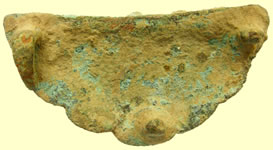

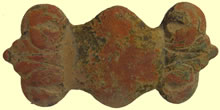
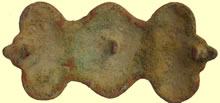



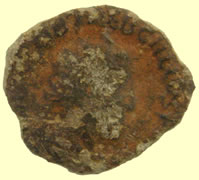
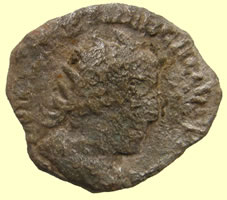


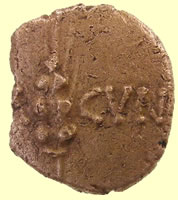
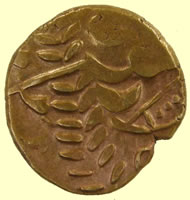
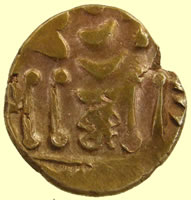
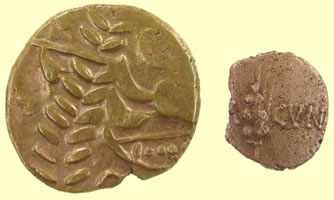

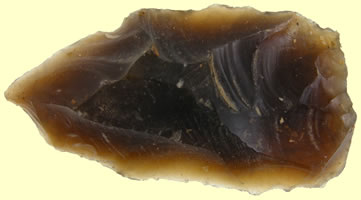



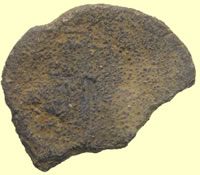
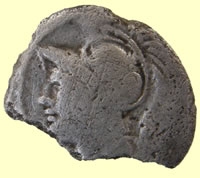
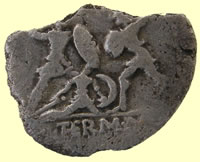
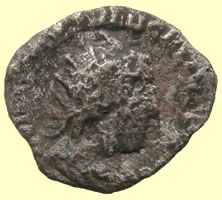
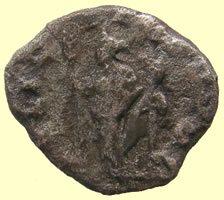
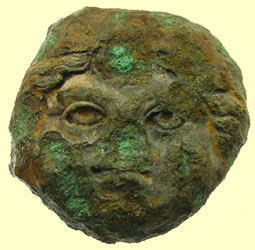



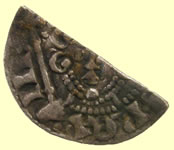

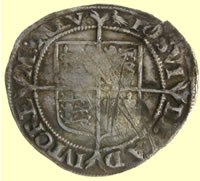
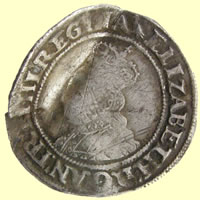
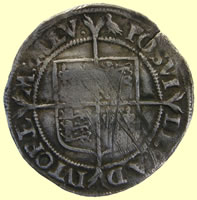
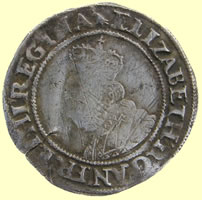


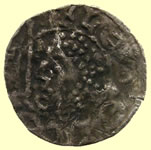
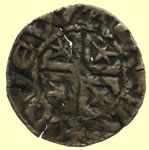


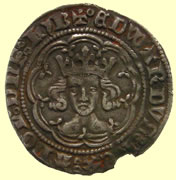
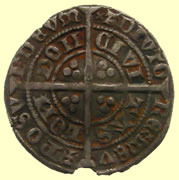

 -
- 